How Long Should a Research Paper Be? Data from 61,519 Examples
I analyzed a random sample of 61,519 full-text research papers, uploaded to PubMed Central between the years 2016 and 2021, in order to answer the questions:
What is the typical overall length of a research paper? and how long should each section be?
I used the BioC API to download the data (see the References section below).

Here’s a summary of the key findings
1- The median length of a research paper is 4,133 words (equivalent to 166 sentences or 34 paragraphs), excluding the abstract and references, with 90% of papers being between 2,023 and 8,284 words.
2- A typical article is divided in the following way:
- Introduction section: 14.6% of the total word count.
- Methods section: 29.7% of the total word count.
- Results section: 26.2% of the total word count.
- Discussion section: 29.4% of the total word count.
Notice that the Materials and methods is the longest section of a professionally written article. So always write this section in enough depth to provide the readers with the necessary details that allow them to replicate your study if they wanted to without requiring further information.
Overall length of a research paper
Let’s start by looking at the maximum word count allowed in some of the well-known journals. Note that the numbers reported in this table include the Abstract , Figure legends and References unless otherwise specified:
[1] excluding figure legends [2] excluding references
⚠ Note A review paper is either a systematic review or a meta-analysis, and an original research paper refers to either an observational or an experimental study conducted by the authors themselves.
Notice the large variability between these journals: The maximum number of words allowed ranges between 3,000 and 9,000 words.
Next, let’s look at our data.
Here’s a table that describes the length of a research paper in our sample:
90% of research papers have a word count between 2,023 and 8,284. So it will be a little weird to see a word count outside of this range.
Our data also agree that a typical review paper is a little bit longer than a typical original research paper but not by much (3,858 vs 3,708 words).
Length of each section in a research article
The median article with an IMRaD structure (i.e. contains the following sections: Introduction , Methods , Results and Discussion ) is in general characterized by a short 553 words introduction. And the methods, results and discussion sections are about twice the size of the introduction:
For more information, see:
- How Long Should a Research Title Be? Data from 104,161 Examples
- How Long Should the Abstract Be? Data 61,429 from Examples
- How Long Should the Introduction of a Research Paper Be? Data from 61,518 Examples
- How Long Should the Methods Section Be? Data from 61,514 Examples
- How Long Should the Results Section Be? Data from 61,458 Examples
- How Long Should the Discussion Section Be? Data from 61,517 Examples
- Length of a Conclusion Section: Analysis of 47,810 Examples
- Comeau DC, Wei CH, Islamaj Doğan R, and Lu Z. PMC text mining subset in BioC: about 3 million full text articles and growing, Bioinformatics , btz070, 2019.
alwaysresearching.com
never stop your research process
What is the normal research paper length.
Research papers are popular for frightening students due to the many hours and hard effort needed. Fortunately, there are several ways to assist you through them. One of them is by understanding the basics, like how to conduct research and the standard length of a research paper.
You’ll discover that if you know the research paper length and how much research you’ll have to do, they’re not that unpleasant to undertake.
In this article, you’ll find the general guidelines for the length of an academic research paper. We’ll also look at the research paper paragraph length and how many pages you can fit your research into.
How many words should a research paper be?
First, let’s begin with the average word count of the research.
How many words are sufficient? A thousand? Or a lot more? To be clear, there’s no general answer specific to all fields. Factors like topics chosen, fields of study, and instructions from an academic professional come into play.
However, a research paper can be between 4000 to 6000 words on average. In some fields, that may get up to 8000 or even more.
How long is a research paper in high school?
How many pages is a research paper in high school? Research papers are often called term papers, and most high school instructors expect their pupils to produce 3 to 5 pages of them.
They are usually given during a semester and sometimes may be up to 5 and 7 pages long if they are final papers.
How long is a short research paper?
A short research paper can be between 2000 to 3000 words long. These are often seen in high school research papers mentioned above. In fewer cases, they can be for college studies.
How long is a research paper: length guide
The length of a research paper varies depending on the stage of education, course of study, and departmental guidelines. In addition, of course, the volume of relevant findings and the length of your conclusion and discussion can also play a part. But these are often personal factors.
However, academic pieces like essays are usually shorter than research papers or theses.
Your research paper assignment will often come with straightforward guidelines on the pages or word count range it is expected to fall within.
For instance, you could be given a paper that should fall between 4500–5000 words or 20–25 pages. If you’re not given a specific range or limit, don’t forget to confirm with your instructor.
A research paper is often divided into:
- Introduction : 15% of the final word count.
- Methods : 35% of the final word count.
- Analysis and Results : 30% of the final word count.
- Discussion : 20% of the final word count.
To answer the question, “how long is a typical research paper?” We intend to look at them through various lenses. The ideal length of a research paper should be up to 8000 words. That means without the references and abstract sections, and you should have over 150 sentences and 30 paragraphs.
Although there are no hard and fast rules for choosing the length of individual paragraphs in a research paper, the most common length is between 90 and 130 words. Any paragraph under 90 words is judged insufficient to support an argument, whereas any paragraph above 130 words is seen as over-inflated.
It is also worth noting that the length of the written piece dictates the paragraph lengths. Therefore, when the document is brief, the paragraphs should be similar and vice versa.
On the other hand, a paragraph should include more than four sentences. This is because some topics in specific fields may require lengthier paragraphs to add facts and statistics to your work. And because every section should concentrate on a single concept, the length of a paragraph should be dictated by its supporting ideas.
For example, if an explanation demands detailed evidence in the form of statistics, illustrations, quotations, examples, and definitions, it would naturally be longer.
However, very brief paragraphs also exist in papers of roughly 2,000 words. These can be frequent and large papers of over 10,000 words. The type of paper and course of study often cause these drastic changes.
The average length of a research paper will always differ because of dissimilar types, structures, topics, and instructions. When giving precise specifications for your research paper length, tailor your research to meet its requirements. Remember to avoid adding irrelevant ideas just to beef up your writing. Stick to concise and rich ideas.

You Might Also Like

Best Way to Organize Research and Write a Perfect Paper
Guide on how to write results and discussion in a research paper, term paper help guide for your perfect piece, leave a reply cancel.
How Long Should a Research Paper Be?

How Long Should A Research Paper Be? An Overview
In short, research paper's average length can range from 1,500 words for research proposals and case studies - all the way to 100,000 words for large dissertations.
Research, by its nature of being complex, requires a careful and thorough elucidation of facts, notions, information, and the like - which is all reflected in its most optimal length.
Thus, one of the critical points that you need to focus on when writing either a complex research paper or a less complex research paper is your objective and how you can relay the latter in a particular context. Say you are writing a book review. Since you will only need to synthesize information from other sources to solidify your claim about a certain topic, you will perhaps use paraphrasing techniques, which offer a relatively lower word count when compared to a full-blown descriptive research paper.
Even when both types of research differ in word counts, they can effectively attain their objectives, given the different contexts in which they are written and constructed.
Certainly, when asked about how long is a research paper, it surely depends on the objective or the type of research you will be using. Carrying out these objectives will warrant you to do certain paper writing tasks and techniques that are not necessarily long or short when you compare them to other research types.
At Studyfy, we care for the attainment of your research objectives. We understand that achieving such will contribute to the success of your research completion. While maintaining the ideal word count for a research paper, you are in a meaningful position to understand the various elements that can enrich your paper, even if it looks overwhelming.
How Long Should the Introduction of a Research Paper Be?
The research introduction section most likely occupies approximately 30-40% of the entire research paper.
The introduction of a regular academic paper can total 1750-2000 words depending on the research type and complexity of the research niche or topic. That is why, in writing this section, you must enrich the content of your paper while maintaining readability and coherence for the benefit of your readers.
The introduction houses the background of the study. This is the part of the paper where the entire context of the paper is established. We all know that the research context is important as it helps the readers understand why the paper is even conducted in the first place. Thus, the impression of having a well-established context can only be found in the introduction. Now that we know the gravity of creating a good introduction, let us now ask how long this section should be.
Generally speaking, the paper’s introduction is the longest among all the sections. Aside from establishing the context, the introduction must house the historical underpinnings of the study (important for case studies and ethnographic research), salient information about all the variables in the study (including their relationship with other variables), and related literature and studies that can provide insight into the novelty and peculiarities of the current research project.
To better understand the general composition of your research introduction, you may refer to the breakdown of this section below:
- Context Establishment and Introduction of Key Terms. In this subsection, you will articulate the background (historical, social, economic, psychological, etc.) of the study, including the ecosystem and the niche of your study interest. Furthermore, key terms found as variables in your study must be properly defined operationally and theoretically, if necessary. This comprises 20% of the introduction, or about 350-500 words.
- Related Literature and Studies. This is the subsection where you will criticize and integrate existing literature and studies to highlight the research gap that you intend to fill in. This comprises 25% of the introduction or about 450-600 words.
- Thesis statement. This part of the introduction can only be a paragraph or a couple of sentences, as this needs to be straightforward in relaying the identified research gap of the researchers. This comprises 5% of the introduction or about 90-100 words.
- Objectives or Research Questions. This subsection should outline the aims of the study, especially highlighting the inquiries that concern the relationship between the variables and how the research will progress to fill in the identified gaps. This comprises 5% of the introduction or about 90-100 words.
Theoretical and/or Conceptual Framework. These frameworks, when better assisted with a visual representation, guide the entire research process and provide a structure for understanding the relationship between the variables in the study. This comprises 10% of the introduction or about 180-200 words.

Struggling with your Research Paper?
Get your assignments done by real pros. Save your precious time and boost your marks with ease.
Elements of Good Research Writing Process– While Maintaining the Ideal Word Count!
- Clarity of Purpose . All types of writing, whether long or short, have its clarity of purpose as the heart of the text. In research, it is manifested through the inclusion of a research question or hypothesis. A good research paper does not repeat these elements without a purpose in mind. Though they can be emphasized throughout the development of the paper, the manner of doing it must be in a logical and purposeful way.
To guide you in writing process of doing so, you can ask yourself the following questions:
- Is the research question or hypothesis clearly stated?
- Does the introduction provide a clear overview of the purpose of the study?
- Does the purpose of the study repeat purposefully in the latter sections of the paper?
- Does the purpose of the study repeat logically in the latter sections of the paper?
2. Literature Review . When appending related literature and studies to your paper, the question must not revolve around whether you have supplied a lot of these pieces of information, making your article wordy and ideal. While the literature review adds a significant ‘chunk’ to your paper, with some paper formats even allotting a specific section for it, we must carefully consider what and how we can integrate them. It subsequently entails a critical analysis of a piece of literature or study and logically places it beside information that you desire to contest. As they say, a good literature review identifies knowledge gaps, highlights the author’s familiarity with the topic, and provides an overview of the research areas that show a disparity of agreement. In order to have these characteristics, you can ask yourself the following questions:
- Have I integrated relevant literature in my review?
- Have I placed it logically within a specific piece of information based on my presumption?
- Do they identify a concept or piece of information that is otherwise unknown to the field?
- Have I critically analyzed existing research to identify the research gap?
3. Logical Flow. Research will not be whole without its parts. Researchers must know how to tie everything together and ensure that each part is functional in itself and supplements with other parts. When dealing with a large body of text, the logical flow of the paper might be a considerable concern. Along with the confusion brought about by the wordiness and complexity of the topic, your readers might get lost because of incoherence and inconsistencies with the presentation of ideas, leading to them not reading your paper any further. Thus, while ensuring that you get the word count that you want, you might want to ask yourself these questions first:
- Does the introduction progress logically from the general background to the specific research question?
- Do the transition devices between sections and individual paragraphs of the body facilitate a smooth flow of ideas?
- Is there a clear hierarchy of ideas, with each paragraph contributing to the overall argument?
- Have I organized ideas in a way that makes the document easy to track?
- Have I pursued a logical sequence of presenting information?
4. Language Use and Style. Developing an academic language throughout your paper and maintaining a formal style of paper writing are all the more important in research writing process, and mind you, it can also help you increase your word count in a sustainable way! Incorporating this form of language and style into your paper entails more than just adding incoherent or overly manufactured words that may be viewed as fillers.
Strategies and known practices are said to hit multiple objectives without compromising the quality of the paper. You may expand your points by providing detailed explanations, introducing sufficient pieces of evidence that supports your claims, addressing counterargument through the presentation of related literature or studies, or clarifying complex concepts through chunking. To better understand these techniques, some of these questions might be helpful for you:
- Is the language clear and concise?
- Have I avoided unnecessary jargon or complex sentences or paragraphs?
- Have I avoided repetition or redundancy in the document?
- Have I expanded on key points by providing more detailed explanations and examples?
- Have I discussed nuances, variations, or exceptions to your results?
- Have I clarified some complex concepts or theories by chunking them into more detailed explanations?
How Long Should a Paragraph Be in a Research Paper?
For the research paper introduction section, a typical paragraph count will be 12-15, excluding the literature review section. Each subsection has 1-2 individual paragraphs. The mentioned section, on the other hand, can have paragraphs totaling 10-20. The conclusion section, on the other hand, is considered ideal if it has 5-7 paragraphs.
The paragraph count differs from one research type to another and even from one paper section to another. While it is worth deciding how long should a paragraph be in a research paper, it is more important to take note of the importance of ideas that should be included in each paragraph within a certain section. Take the review of the literature section as an example. The number of literature in the paper is said to be equal to the number of paragraphs allotted for the section. The reason lies in the uniformity of importance these pieces of literature hold, provided that they are closely associated with the research gap.
Do you feel like you need to pay for a research paper in hopes of finding a model article with the right paragraph count? Look no further, as Studyfy has its in-house research paper writing service that houses professionals and experts for your academic paper writing help. Its reasonable price– no deadline markup nor additional hidden charges– is tantamount to the expertise each writer has put into their work.
Did you like our inspiring Research Paper Guide?
For more help, tap into our pool of professional writers and get expert essay editing services!
How Long Should a Conclusion Be in a Research Paper?
A concluding section, then, must only comprise 5% of the total word count of the paper, translating to approximately 400 words. This measly allocation may put you into a flimsy situation, especially if you do not know how to manage your vocabulary well and you keep on adding filler words that can sacrifice the importance of this section. Ditch the nonsense and construct your conclusion in a concise yet enriching way.
In concluding a research paper, it is important to always synthesize the big chunks of information examined in the data analysis and discussion. As worn out as the reader may look after reaching this point, the conclusion must act as a “mellow point” for them, entrusting them only with important pointers of the study. Sometimes, the conclusion part of the paper, even though less wordy than its preceding sections, may be difficult to construct, as you still need to have a basis– a scaffold– to refer to, and synthesizing, just like analyzing and evaluating data, is just as hard and laborious.
Through its superb essay writing services , plus applying top-notch quality assurance to academic papers like research articles, Studyfy can help you achieve the best for last with an effective, meaningful, and content-rich conclusion. Your readers will not think twice about using your study as a model for their own works!
How Long is a Research Paper in terms of its Various Types?
As mentioned in the first part of the article, the word count of an academic paper is dependent on the type of research you wish to conduct. While the general word count has been given, we cannot deny the fact that this threshold is only an estimation. There might be a time when you are tasked to create a research article that is different from a standard IMRAD-structured (Introduction, Methodology, Results, Analysis, Discussion) research paper. You are in for a treat, as we will provide you with a cheat sheet for the word count of several types of write-ups in the realm of research:

Research Proposal
Specific Purpose/s: A preliminary outline that contains the research question, minimal literature review, methodology, and significance of the research undertaking.
"Word Count Range: 1500-3000 words"
Review Article
Specific Purpose/s: Review bodies of literature about an overarching topic or niche, analyze a particular section, synthesize according to certain themes, and identify knowledge gaps from the findings.
"Word Count Range: 5000-10,000 words"
Meta-Analysis
Specific Purpose/s: Involves the use of statistical analyses of multiple studies to provide a quantitative synthesis of the evidence.
"Word Count Range: 5000-15,000 words"
Specific Purpose/s: Presents an in-depth and intrusive analysis of a specific case, one which aims to illustrate a broader concept or novel phenomenon.
"Word Count Range: 1500-5000 words"
Conference Paper
Specific Purpose/s: Presents a brief introduction, salient research findings, and implications connected to a given theme by a conference or colloquium.
"Word Count Range: 2000-5000 words"
Dissertation
Specific Purpose/s: Regarded as a terminal scholarly requirement for doctorate students, this is an in-depth discussion of an otherwise original research finding, often written in chapters. It contributes significantly to the body of knowledge of a particular study of interest.
"Word Count Range: 50,000-100,000 words (depending on the institution)"
Are you contemplating buying research papers of different types? Studyfy got your back! Its roster of writers and editing experts leaves no space for errors, ensuring that both quality and quantity– that’s right: content and word count are not compromised. The variety of expertise within ensures that all research and scholarly works are delivered to your liking. Pay less– no hidden charges and markups while you enjoy the best quality of writing with Studyfy.
Frequently Asked Questions
How long is the introduction in a research paper.
AThe introduction takes up about 30-40% of the entire paper since the context and research background should be specified and further discussed. For a general academic paper with 4000 words, the introduction must be approximately 1500 words. You can do the math for the rest!
How long is a research paper, considering that there are many of them?
There is no one-size-fits-all guideline in determining the word count of a plethora of research papers in the world. Although there is an accepted word count range for each research type (as presented in the previous section), there are several factors that should likewise be considered in determining the word count: specific guidelines set by the institution you are working with, the complexity of the topic, audience, and depth of analysis.
Do I have to include all of the prescribed subsections of the introduction to increase the word count?
While the prescribed subsections have significant functions in the research paper introduction, some of them are not required to be included. The decisions depend on the type of research you wish to conduct and the external guidelines that you might need to follow. Some disciplines, such as social sciences, require a research article to have a theoretical framework, whereas others do not. Some research papers follow the standard IMRAD paper format that infuses the literature review section into the introduction, while the Germanic Thesis paper format, for example, regards the former as a separate section.
How do I increase my word count without compromising the quality of my research paper?
The dilemma of choosing quality over quantity has long been debunked: you do not have to choose in the first place. All you need is a set of writing strategies and techniques that will target those two birds using one stone. You may provide more detail to some ambiguous or novel terms. You can add additional works of literature to some concepts that promote abstraction. You may include examples or empirical pieces of evidence to create a more concrete representation of a concept or theory. Lastly, you may use subheadings to efficiently allocate word count for your chosen discussion topics.
Why is it important to track the word count of a research paper?
There are various reasons why we need to do it. Some institutions that publish scholarly journals follow certain guidelines in word count as one of the primary requirements. A specified limit enables researchers to allocate the number of words to several sections of their writing efficiently. Most institutions also use paper length as a predictor of publication cost. The longer the word count is, the costlier the publication will be. Lastly, reading engagement is affected by word count, as readers tend to shy away from reading an article that is long, boring, and insubstantial.
Can a writing service help me achieve my goals of writing within the right word count range?
Certainly! Studyfy offers several academic services, including writing services and research papers for sale . Understanding your various writing needs, writers can cater to the needed style, word count, formatting, and any other aspects so that you can have the best quality write-up without having to fear extra charges and big markups.
Book Your Assignment Now and get 15% Off Only Valid For May Contact US
- Google Meet
- Mobile Dialer

Resent Search

Management Assignment Writing

Technical Assignment Writing

Finance Assignment Writing

Medical Nursing Writing

Resume Writing

Civil engineering writing

Mathematics and Statistics Projects

CV Writing Service

Essay Writing Service

Online Dissertation Help

Thesis Writing Help

RESEARCH PAPER WRITING SERVICE

Case Study Writing Service

Electrical Engineering Assignment Help

IT Assignment Help

Mechanical Engineering Assignment Help

Homework Writing Help

Science Assignment Writing

Arts Architecture Assignment Help

Chemical Engineering Assignment Help

Computer Network Assignment Help

Arts Assignment Help

Coursework Writing Help

Custom Paper Writing Services

Personal Statement Writing

Biotechnology Assignment Help

C Programming Assignment Help

MBA Assignment Help

English Essay Writing

MATLAB Assignment Help

Narrative Writing Help

Report Writing Help

Get Top Quality Assignment Assistance

Online Exam Help

Macroeconomics Homework Help

Change Management Assignment Help

Operation management Assignment Help

Strategy Assignment Help

Human Resource Management Assignment Help

Psychology Assignment Writing Help
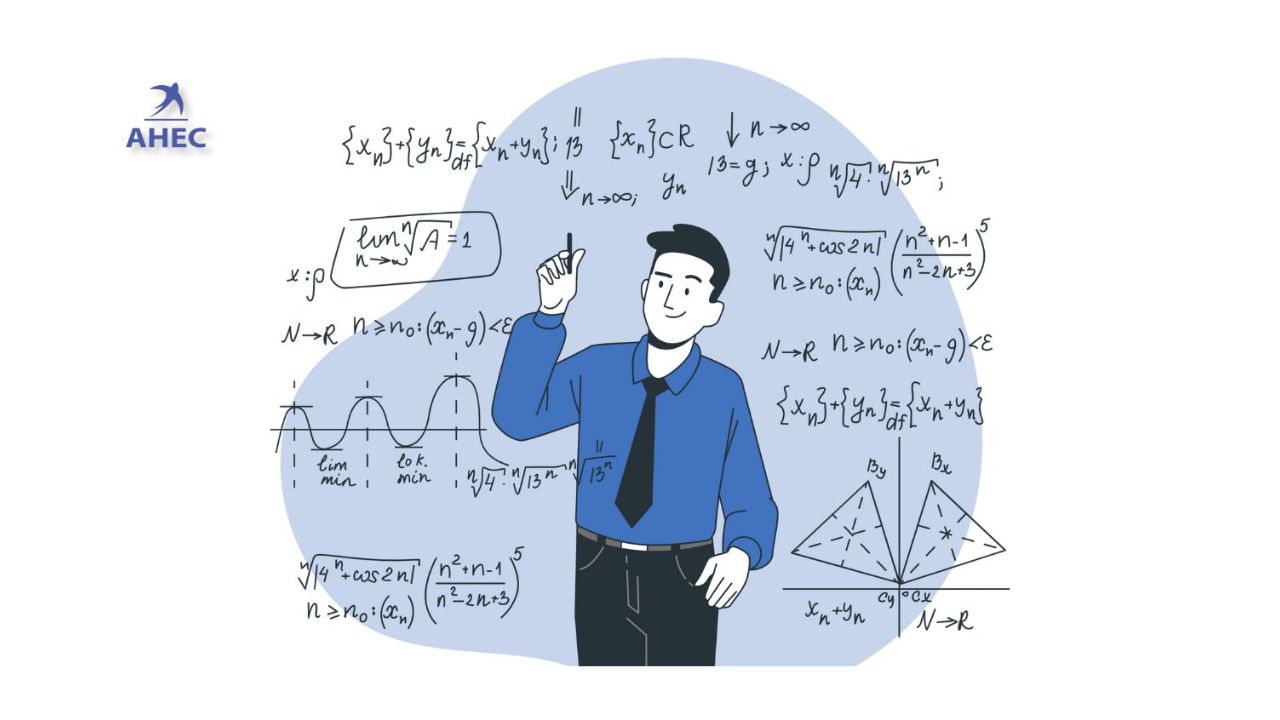
Algebra Homework Help

Best Assignment Writing Tips

Statistics Homework Help

CDR Writing Services

TAFE Assignment Help

Auditing Assignment Help

Literature Essay Help

Online University Assignment Writing

Economics Assignment Help

Programming Language Assignment Help

Political Science Assignment Help

Marketing Assignment Help

Project Management Assignment Help

Geography Assignment Help

Do My Assignment For Me

Business Ethics Assignment Help

Pricing Strategy Assignment Help
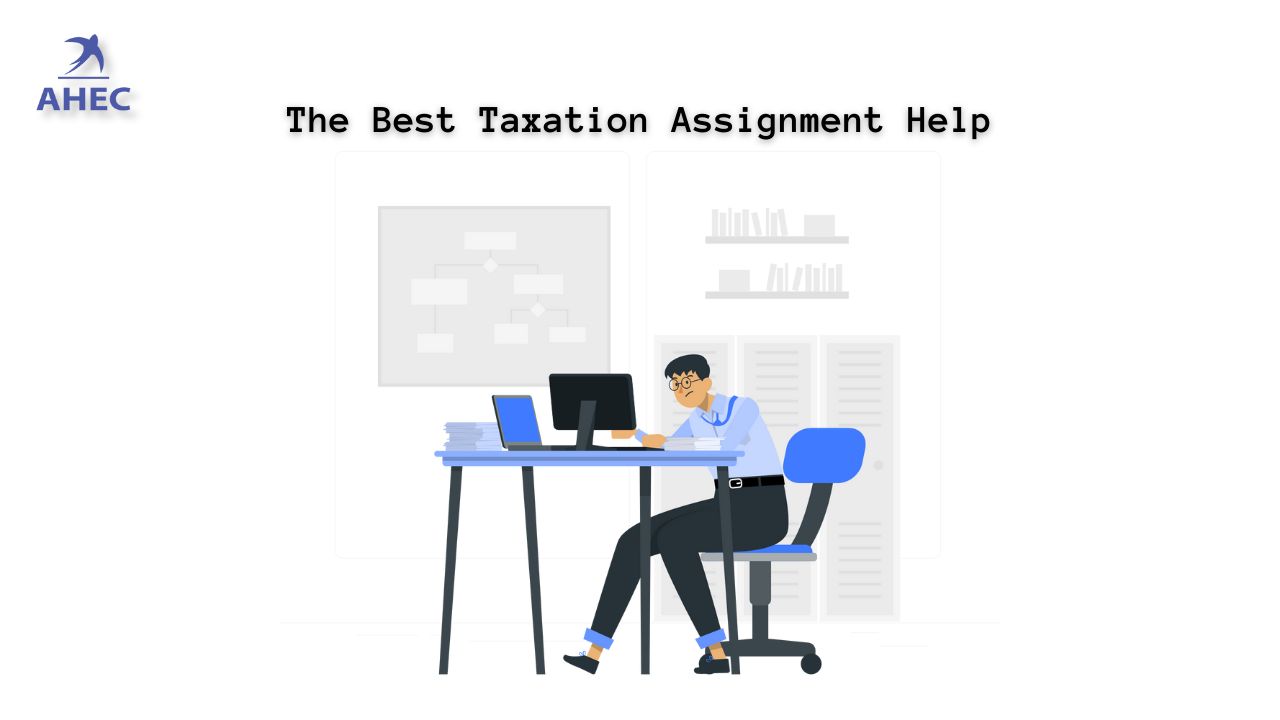
The Best Taxation Assignment Help

Finance Planning Assignment Help

Solve My Accounting Paper Online

Market Analysis Assignment

4p Marketing Assignment Help

Corporate Strategy Assignment Help

Project Risk Management Assignment Help

Environmental Law Assignment Help

History Assignment Help

Geometry Assignment Help

Physics Assignment Help

Clinical Reasoning Cycle

Forex Assignment Help

Python Assignment Help

Behavioural Finance Assignment Help

PHP Assignment Help
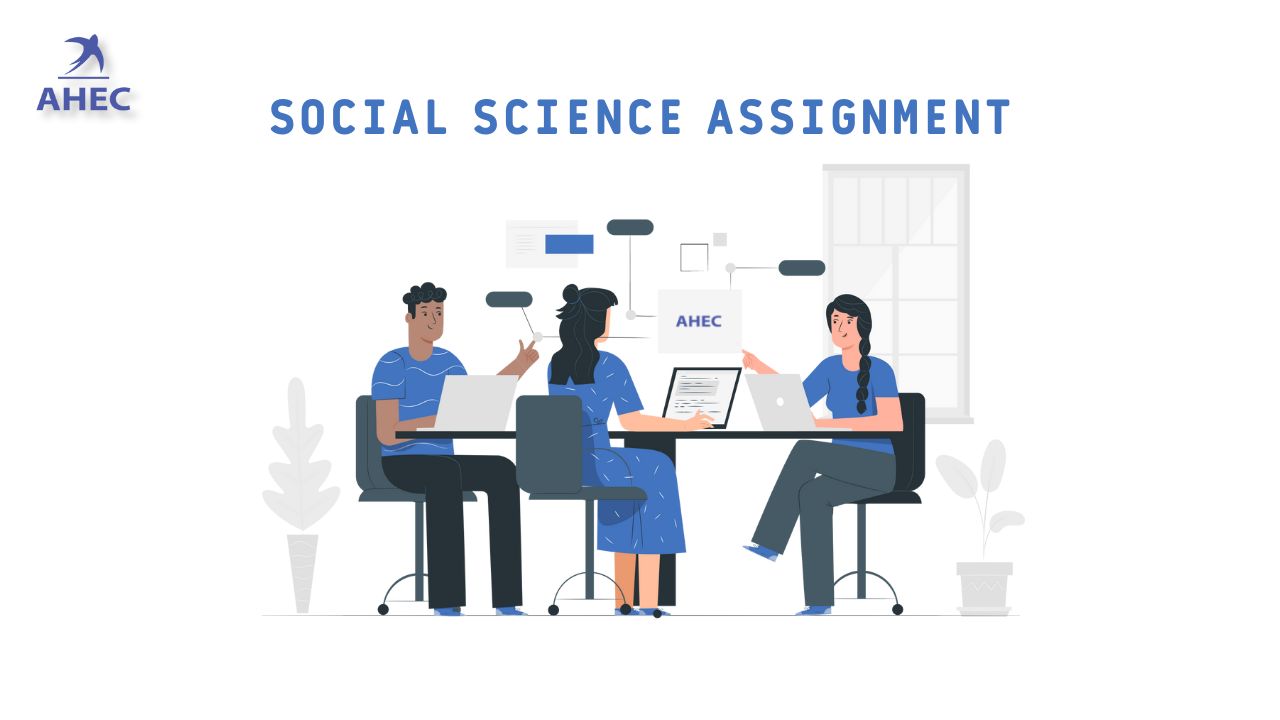
Social Science Assignment Help

Capital Budgeting Assignment Help

Trigonometry Assignment Help

Java Programming Assignment Help

Corporate Finance Planning Help

Sports Science Assignment Help

Accounting For Financial Statements Assignment Help

Robotics Assignment Help

Cost Accounting Assignment Help
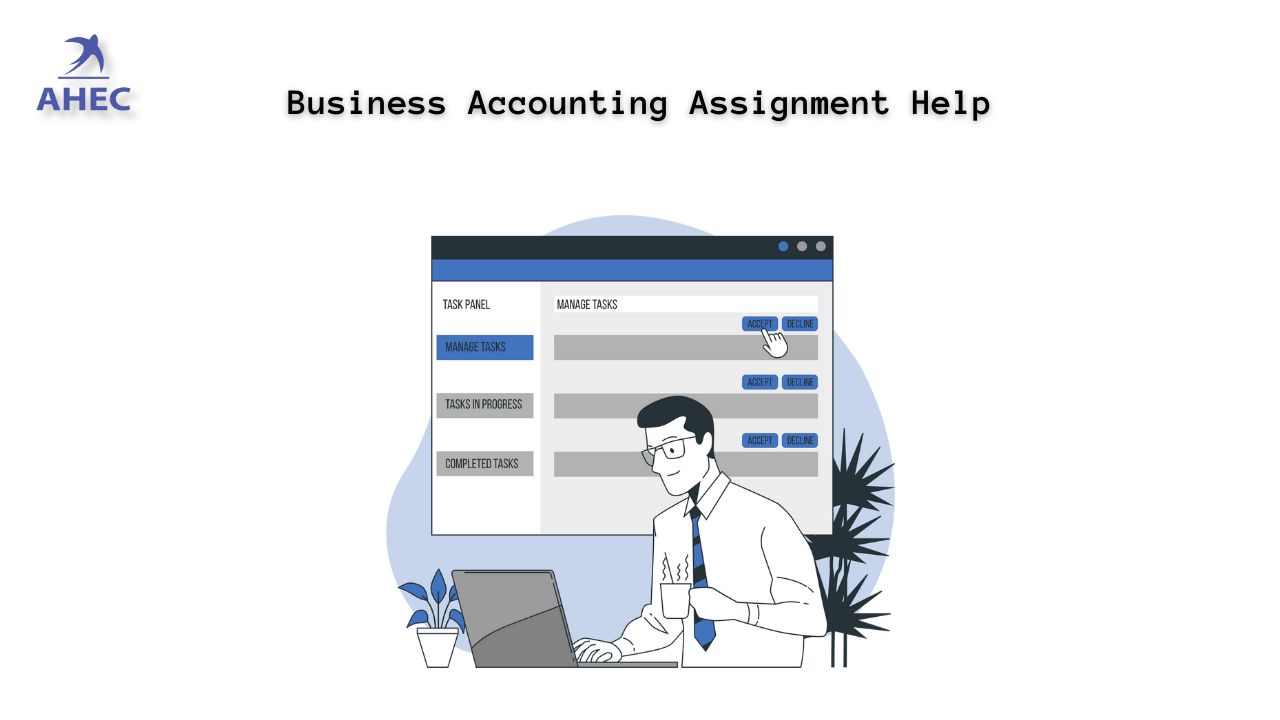
Business Accounting Assignment Help

Activity Based Accounting Assignment Help

Econometrics Assignment Help

Managerial Accounting Assignment Help

R Studio Assignment Help
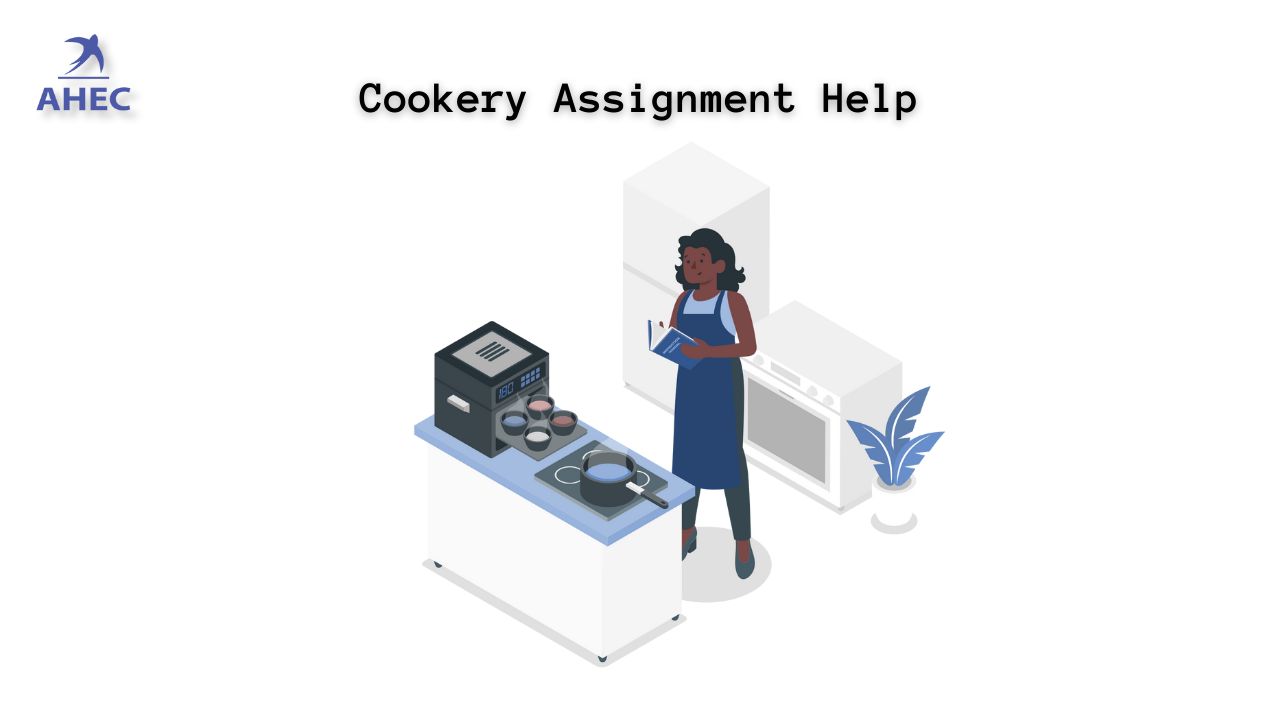
Cookery Assignment Help

Solidworks assignment Help

UML Diagram Assignment Help

Data Flow Diagram Assignment Help

Employment Law Assignment Help

Calculus Assignment Help

Arithmetic Assignment Help

Write My Assignment

Business Intelligence Assignment Help

Database Assignment Help

Fluid Mechanics Assignment Help

Web Design Assignment Help

Student Assignment Help

Online CPM Homework Help

Chemistry Assignment Help

Biology Assignment Help

Corporate Governance Law Assignment Help

Auto CAD Assignment Help

Public Relations Assignment Help

Bioinformatics Assignment Help

Engineering Assignment Help
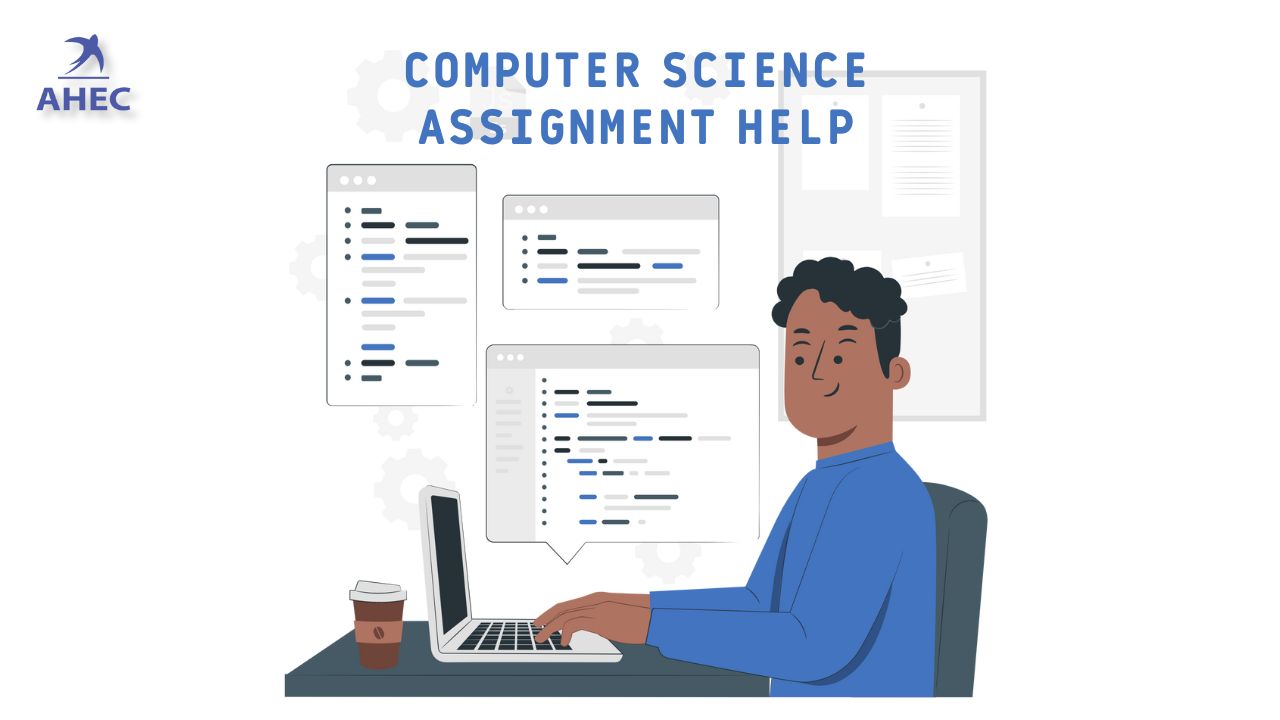
Computer Science Assignment Help

C++ Programming Assignment Help

Aerospace Engineering Assignment Help

Agroecology Assignment Help

Finance Assignment Help

Conflict Management Assignment Help

Paleontology Assignment Help

Commercial Law Assignment Help

Criminal Law Assignment Help

Anthropology Assignment Help

Biochemistry Assignment Help

Get the best cheap assignment Help

Online Pharmacology Course Help

Urgent Assignment Help

Paying For Assignment Help

HND Assignment Help

Legitimate Essay Writing Help

Best Online Proofreading Services

Need Help With Your Academic Assignment
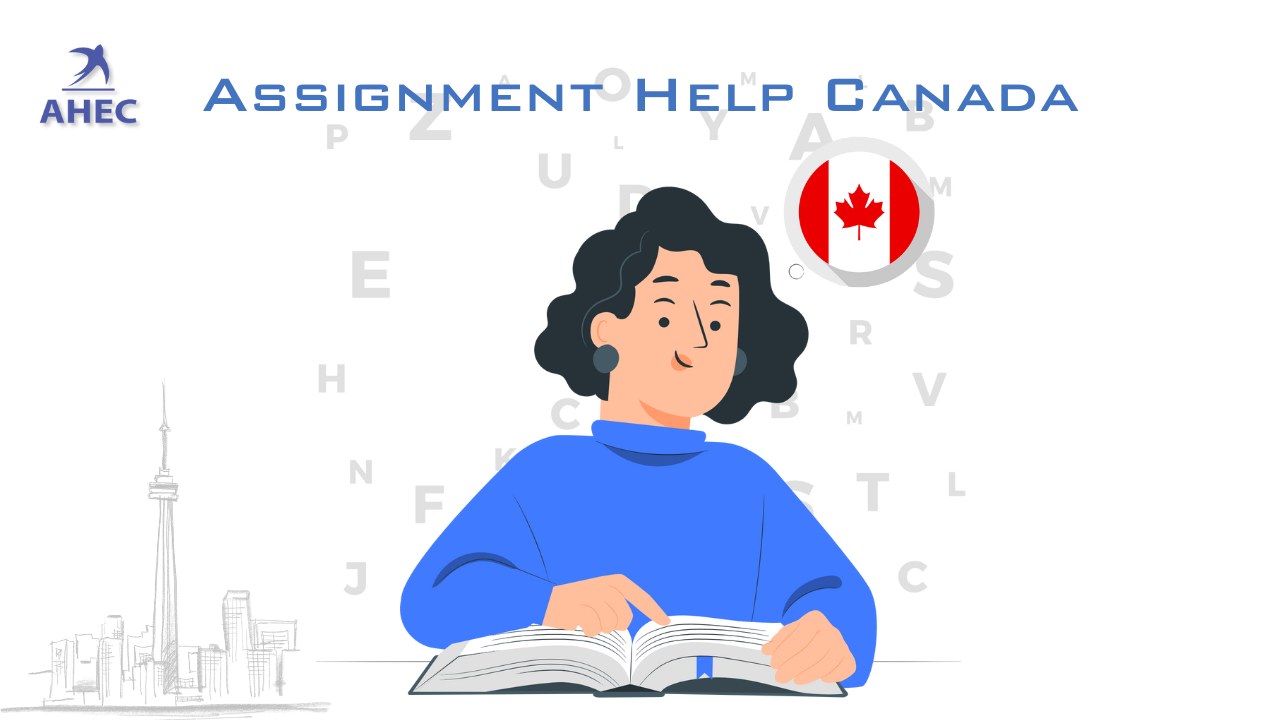
Assignment Writing Help In Canada

Assignment Writing Help In UAE

Online Assignment Writing Help in the USA

Assignment Writing Help In Australia

Assignment Writing Help In the UK

Scholarship Essay Writing Help

University of Huddersfield Assignment Help

Ph.D. Assignment Writing Help

Law Assignment Writing Help

Website Design and Development Assignment Help
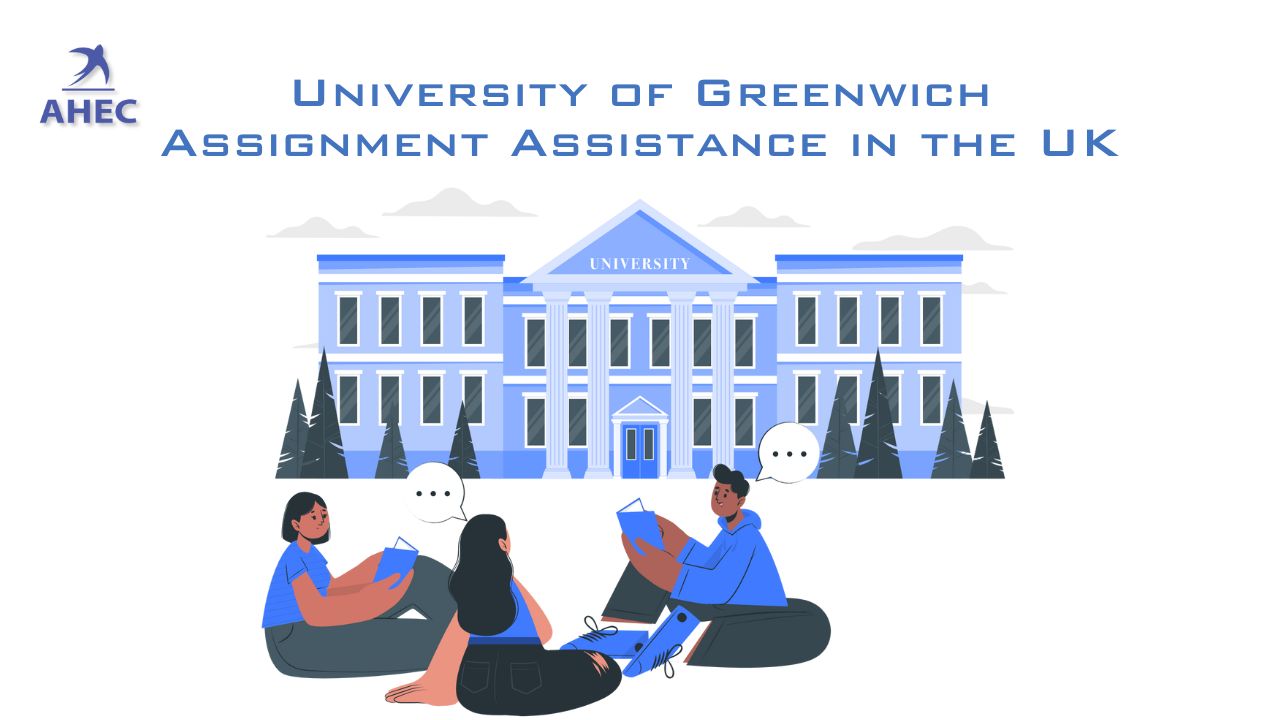
University of Greenwich Assignment Assistance in the UK
How long a Research Paper should be
You might be thinking about what length your research paper must be. You're not all on your own. Students are constantly asking what is the ideal length of their term papers. This issue can be complicated if your instructor hasn't provided you with the maximum page as well as the word count.
Research papers are extremely complex due to the fact that they are academic papers that are based upon your research done on the subject you are researching. This is the reason why our help with writing papers will be helpful for getting that A.
Whatever approach you pick you will need to include an analysis, as well as a conclusion of your results in order to be comprehensive. In taking all of these factors into consideration, students frequently think about how long their research paper ought to be. Let's take a look in detail;
How long should each component of a research paper last?
In general, the ideal length for a research paper is 5 pages for shorter papers as well as 10 pages for lengthy ones. The exact length of your term paper should be decided by your instructor and the guidelines they provide. This will be determined by a variety of elements, such as the size or depth topic.
Factors that determine the length of the Paper
The issue of the length of a research paper is a difficult one to answer since it is based on a variety of aspects. The primary elements to determine the length of your research paper are:
- Your subject for your study
- The variety of topics that emerge from the subject
- Complexity and number of subtopics,
- The extent of your research
- The scope of your discussion and your conclusions.
If all those variables remain the same It is feasible to determine how long a simpler research paper when it is separated into sections, which include the outline introduction, introduction, paragraphs, conclusion, and reference page.
These are the essential elements of an average research paper. Let's examine the length of each section that is required to be.
What is a good outline for a term paper should be
An outline is an essential component of your study paper. It defines the structure of your essay. It organizes the content in your paper's segments.
The outline, however, is not a complete description of the paper. It simply highlights the subjects to be discussed as well as the issues that need to be addressed within those subjects.
A format for an outline should contain the following elements:
- An Introduction
- The issue is being addressed
- A Literature review
- Methodology
- Discussion and results
- Conclusion and recommendation
The brief descriptions of full sentences are available in the five sections which provide the guidelines to write your research. Thus, the outline shouldn't exceed two pages in the case of short research papers, and 4 and 5 pages for longer research papers that range from 15-20 pages.
Optimal Length of a Research Paper Introduction
As we've already mentioned that how long you write your essay is determined by the subject and its content. The same is true for the introduction. In a typical research paper, the introduction should not be more than half of a page.
But, if you're writing a lengthy essay of at least 15 pages, your introduction might be as long as one page or even several paragraphs. Because the majority of research papers that are given to college students at the beginning of their studies aren't long and short, the length of your introduction should not exceed one page.
The length that is recommended for each paragraph in research papers
Although there aren't specific rules that define the length of each paragraph in a document the recommended length should be between 90 to 130 words. Any paragraph that is less than 90 words is considered as being too short to be able to stand on its own and one with more than 130 words is considered to be too argumentative.
However, it is vital to keep in mind that the length of the paragraph will be determined by how long the document is. If the paper is small and the paragraphs are short, they should be brief.
If the research paper is lengthy and the paragraphs must be more extensive. A paragraph must be longer than just four paragraphs. For certain topics, such as childhood obesity, your paragraphs can be extended in order to incorporate the data and statistics into your article.
Since each paragraph should concentrate on one concept The length of each paragraph is determined by the text supporting it.
If your idea needs an extensive amount of information by way of images, illustrations, figures and paraphrases, quotes and definitions, as well as causes and consequences, then the paragraph will be more lengthy.
If the notion of the paragraph is simple and doesn't require much evidence, it can be shortened.
The paragraphs add information and information to an outline. The outline includes topics, subtopics, and guidelines. While the paragraphs provide content and additional explanations.
How Long Should a Conclusion be
Conclusions are an extremely vital aspect of your paper. It is because your role as the writer of your essay is wrapping up all the information you've discussed in your research paper. The length of your conclusion is dependent on the size of your article.
The longer the essay is, the longer the conclusion. The less its length, the smaller the conclusion. The conclusion should not be less than 3 sentences. It could take you a few hours to write these parts of your paper.
Although this may be true, a valid conclusion must have these features.
What makes a good term paper conclusion
- Summary of the subject of your study
- Thesis restatement. The statement you make should not be the same as the one you made in your introduction.
- Write a synopsis of your major aspects. Don't give any information that is new.
- You could also combine your points to elaborate on the importance of your arguments.
- Create a call to action only if it's relevant or important to the content of your document.
- Answer"the "so what" question. It is important to describe the purpose of your essay and the reason why it is important to your readers.
In this way, it's clear that the concluding paragraph is crucial when writing your paper. It is possible to not include all of these however it is crucial to summarize the thesis, your topic, and the major elements of your research paper. Read our guide to writing research papers for more information you can write these pieces.
How much should you keep on the Reference Page?
The length of your reference page depends on the number of sources that you've utilized in your essay. Your essay could be long when you have only a few sources, whereas other papers could be shorter when using many sources.
A quality term paper must include a reference page that lists all sources for your data. If you list your sources using the correct format for references, such as APA and MLA The amount of space on the page isn't absolute.
Frequently asked questions
How long should a high school term paper be , what is the ideal length for a graduate paper , how long should a middle school term paper be , how long should a research paper's literature review be , how to write a term paper quickly .
To begin writing a research paper quickly, choose a topic. Following that, you will conduct research on the topic and work on a thesis. Create an outline to help you write the structure of your paper. Write the paper according to the outline, beginning with an introduction and ending with a conclusion. Finally, proofread your paper to catch any mistakes. Read our checklist for revising your paper to a final draught.
What are the most common formats for research papers ?
You must use a specific formatting style when formatting a research or term paper. MLA, APA, Chicago, and Harvard are the most common research paper formats. Each format specifies the paper's style, spacing, in-text citation style, and reference page style. You can get all of these things done for you if you pay someone to write your homework.
How long is the average academic journal article ?
How long should a research paper take , how long is a short research paper , how long is a typical college research paper , what makes a good research paper , what makes a research paper low quality .
A low-quality study has findings that are uninterpretable, very likely to be incorrect, or have a high risk of bias. As a result, papers with a lot of jargon, poor diction, and bad grammar are usually rejected by publishers.
Is it possible to fail a research paper ?
Can you resubmit a rejected paper , how many pages is a typical journal , how many paragraphs should be in a research paper .

Top 10 Best Universities Ranking list in India 2022

Generic Conventions: Assignment Help Services

Research Paper Topics For Medical

Top 5 Resources for Writing Excellent Academic Assignments

How to Write a Literature Review for Academic Purposes

Tips for Writing a killer introduction to your assignment

How To Write A Compelling Conclusion For Your University Assignment

Research Papers Topics For Social Science

Best 150 New Research Paper Ideas For Students

7 Best Plagiarism Checkers for Students And Teachers in 2024
Enquiry form.

- About the LSE Impact Blog
- Comments Policy
- Popular Posts
- Recent Posts
- Subscribe to the Impact Blog
- Write for us
- LSE comment
May 6th, 2015
How long does a scientific paper need to be length limits can have a detrimental effect on scientific reporting..
7 comments | 1 shares
Estimated reading time: 5 minutes

There was an interesting exchange a few weeks ago on PubMedCommons between Maurice Smith, senior author of a paper on motor learning, and Bjorn Brembs, a neurobiologist at the University of Regensburg. The main thrust of Brembs’ critique was that the paper, which was presented as surprising, novel and original, failed adequately to cite the prior literature. I was impressed that Smith engaged seriously with the criticism, writing a reasoned defence of the choice of material in the literature review, and noting that claims of over-hyped statements were based on selective citation. What really caught my attention was the following statement in his rebuttal:
We can reassure the reader that it was very painful to cut down the discussion, introduction, and citations to conform to Nature Neuroscience’s strict and rather arbitrary limits. We would personally be in favor of expanding these limits, or doing away with them entirely, but this is not our choice to make.
As it happens, this comment really struck home with me, as I had been internally grumbling about this very issue after a weekend of serious reading of background papers for a grant proposal I am preparing. I repeatedly found evidence that length limits were having a detrimental effect on scientific reporting. I think there are three problems here.
Image credit: Idea Bulb by Ramunas Geciauskas , Flickr CC BY
1. The first is exemplified by the debate around the motor learning paper. I don’t know this area well enough to evaluate whether omissions in the literature review were serious, but I am all too familiar with papers in my own area where a brief introduction skates over the surface of past work. One feels that length limits play a big part in this but there is also another dimension: To some editors and reviewers, a paper that starts documenting how the research builds on prior work is at risk of being seen as merely ‘incremental’, rather than ‘groundbreaking’. I was once explicitly told by an editor that too high a proportion of my references were more than five years old. This obsession with novelty is in danger of encouraging scientists to devalue serious scholarship as they zoom off to find the latest hot topic.
2. In many journals, key details of methods are relegated to a supplement, or worse still, omitted altogether. I know that many people rejoiced when the Journal of Neuroscience declared it would no longer publish supplementary material : I thought it was a terrible decision. In most of the papers I read, the methodological detail is key to evaluating the science, and if we only get the cover story of the research, we can be seriously misled. Yes, it can be tedious to wade through supplementary material, but if it is not available, how do we know the work is sound?
3. The final issue concerns readability. One justification for strict length limits is that it is supposed to benefit readers if the authors write succinctly, without rambling on for pages and pages. And we know that the longer the paper, the fewer people will even begin to read it, let alone get to the end. So, in principle, length limits should help. But in practice they often achieve the opposite effect, especially if we have papers reporting several experiments and using complex methods. For instance, I recently read a paper that reported, all within the space of a single Results section about 2000 words long, (a) a genetic association analysis; (b) replications of the association analysis on five independent samples (c) a study of methylation patterns; (d) a gene expression study in mice; and (e) a gene expression study in human brains. The authors had done their best to squeeze in all essential detail, though some was relegated to supplemental material, but the net result was that I came away feeling as if I had been hit around the head by a baseball bat. My sense was that the appropriate format for reporting such a study would have been a monograph, where each component of the study could be given a chapter, but of course, that would not have the kudos of a publication in a high impact journal, and arguably fewer people would read it.
Now that journals are becoming online-only, a major reason for imposing length limits – cost of physical production and distribution of a paper journal – is far less relevant. Yes, we should encourage authors to be succinct, but not so succinct that scientific communication is compromised.
This post originally appeared on the author’s personal blog and is reposted with permission.
Note: This article gives the views of the author, and not the position of the Impact of Social Science blog, nor of the London School of Economics. Please review our Comments Policy if you have any concerns on posting a comment below.
About the Author
Dorothy Bishop is Professor of Developmental Neuropsychology and a Wellcome Principal Research Fellow at the Department of Experimental Psychology in Oxford and Adjunct Professor at The University of Western Australia, Perth. The primary aim of her research is to increase understanding of why some children have specific language impairment (SLI). Dorothy blogs at BishopBlog and is on Twitter @deevybee.

About the author
“Philosophiæ Naturalis Principia Mathematica”, “Relativity: The Special and General Theory” to name few were published for the Field of Knowledge. The Editors and Publishers were existing at that moment too. Now, Editors and Publishers are doing their job not for all Fields of Knowledge but for counting alone: Counting Words, Counting Sentences, Counting Paragraphs, Counting Pages, Counting Articles, Counting Books, Counting References, Counting Citations, Counting Authors, Counting Fame, Counting Editors, Counting Publishers, Counting Institutes, Counting Funding Agencies, Counting Governments, Counting Countries, Counting Money. Counting is Counting, Field of Knowledge is not always about counting. Counting can provide guarantee for counting. Field of Knowledge provides Field of Knowledge.
How about writing two versions? A short one for the journal with a link to a longer fuller version for interested readers?
- Pingback: How long does a scientific paper need to be? Do length limits have a detrimental effect on scientific reporting? | The Publication Plan
- Pingback: URLs of wisdom (30th May 2015) | Social in silico
- Pingback: I didn't have time to write a short blog post, so I wrote you a long one - James Howard
Every time I submit an article for publication the editor replies ‘Please send the whole article’ to avoid saying ‘It’s damn short!’ So I am sending only ‘statements’ for publication.
Boghos L. Artinian MD
Leave a Comment Cancel reply
Your email address will not be published. Required fields are marked *
Notify me of follow-up comments by email.
Related Posts

The ‘Call for Participants’ platform connects researchers with participants so as to improve the efficiency and accuracy of research trials.
July 19th, 2013.

Gained in translation: adding value to research to inform policy
June 14th, 2017.

Our current conceptualisation of peer review must be expanded if we’re to realise the greatest innovations
September 14th, 2017.

Qualitative and quantitative research are fundamentally distinct and differences are paramount to the social sciences
December 12th, 2014.

Visit our sister blog LSE Review of Books
How Long Should A Research Paper Be?

You must have known what research looks like. It has a particular structure that should be followed at any cost since it is the criteria for writing a research paper . Several questions come into the mind of students such as how to write a research paper, how long should a research paper be, etc.
That’s why we have brought a series of research writing and addressing different questions related to it. This blog aims to answer queries about the duration your research should ideally take, including insights on how to write an 8-page paper effectively. Although it depends upon the guidelines given by your teacher, there is also a standard length of research writing. Let’s dive in and learn everything about the ideal word count of any research.
Table of Contents
What is a Research Paper?
A research paper is an essay that is based on your investigational work you have completed or will complete on just one or many specific topics of a specific discipline. Research or investigation essays are lengthy depending on the scope and extensive nature of the topic.
It’s just an analysis of the topic from your own perspective. A student or a reader present facts and their theories in front of the audience to inform them about the specific subject matter. If you dont know how long is a research paper, here we will take you on a deeper tour to help you understand these essays thoroughly.
What is the Standard Length of a Research Paper?
Discussing the standard length of a paper, it’s important to note that it varies depending on the specific instructions given to each student and the structural requirements related to their chosen finance research topics . It is never a fixed one for all types of papers yet, there are some conditions and possibilities because of which the word count varies.
Research that has a thesis statement only requires 2 to 3 arguments to be proved and will be summed up in 500 to 700 words. After providing the introduction and a little background on the research, you can directly shift to mentioning the arguments and claims so you may prove the statement and complete the research.
Some research requires detailed analysis and interpretation of the findings. This kind of paper has several stages such as introduction, background, thesis statement, objective, research questions, literature review, research methodology, data collection, discussion, findings, conclusion, and bibliography. Such research easily crosses 5000 words because it is important to discuss everything about the topic.
So it entirely depends upon the structure you are following to write the research. It could be as long as just 500 words, or 5000 words, and even more. It all varies therefore you must be prepared for writing a paper no matter how long it should be.
How long is introduction in research paper?
Many students wonder how long should an introduction be in a research paper? The simple answer to this query is as short as possible that justify the requirements and employ all the methods that are necessary for coveying your message.
Typically, a standard length of introductory paragraph is 300-500 words. If your topic needs more than the standard word count than always ask for suggestion from your professor on first priority. We hope now you know how long should an introduction be for a research paper.
Why Considering Length of a Research Paper is Important
Identifying the length of research is important because of so many reasons. You might have never realized the significance of considering how long a paper should be, so here we go with some of the vital reasons.
1. Going Extra May Ruin Your Research
You cannot write more than is required in research. If you are doing so then you are automatically ignoring the quality measures of writing a paper. If you are writing more than words than is required then there are chances you are going to submit a poor quality research work.
2. Sticking to the Guidelines is Important
When your guidelines have mentioned 1000 words maximum and you are submitting research of 2000 words, you already know what wrong you have done. If you are not sticking to the guidelines it will result in deduction of marks, fall in grades, and repetition of the class course.
3. Having a Balance is Good
It is necessary to keep a balance between the word count of all the headings. Without this much-needed balance, you might end up submitting a poor paper that has a longer introduction, and a shorter explanation of the findings. That’s why attaining a balance is important in your research word count.
4. Delivering Quality Research is the Criteria
When you are delivering quality content, you will be appreciated no matter what. If you consider the length of your research, you are one step forward in delivering quality research work to your teacher.
How Long Should a Research Paper Be?
This question is valid and one of the frequently asked questions by the students of high school and college. It is also important to know before you start working on your paper. Don’t forget to read the instructions provided by your teacher, however, we have more suggestions for you regarding the length of the research.
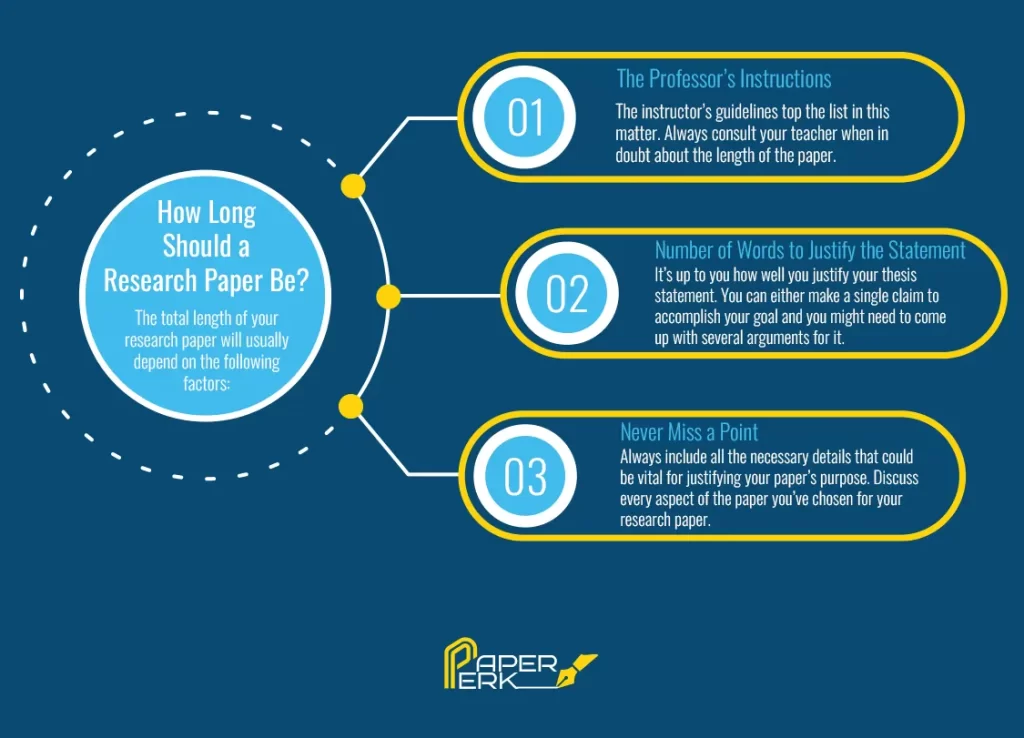
1. It All Depends On Your Teacher First
Your teacher indeed decides what should be the ideal length of your research. They have given some guidelines to you and you need to follow them. The teachers always know the best and they will suggest to you how long your essay should be.
Some teachers have kept a certain word limit for the paper while others provide you complete freedom to write as long as you want. It is necessary to figure out what’s best for your research. In high schools, a standard length of any research is a maximum of 7 to 8 pages while the minimum should be 5 pages.
2. Check How Much Length is Required to Justify Your Statement
Sometimes it is based on the thesis for research paper . From the part of the abstract to the conclusion, there must be a balance between the word count of every heading. It is your responsibility as a writer to track the word count when you are trying to justify your thesis by giving several arguments and claims.
If you have decided how many arguments it will take to prove your thesis, then you have already finalized the length of your research. All you have to do is prepare everything in advance and see if you are proving your point within 5 or 8 pages.
3. It Shouldn’t Miss Any Point
A researcher must be discussing all the standard details that could justify the purpose of writing the paper. It must have all the headings properly discussed. Since all the points must be 100% clear in the research, deciding on a word limit in the very beginning could be a little hard.
But it is not impossible to identify by making an outline and checking how many pages will be covered in writing about a certain topic. All you have to do is take care that no point is missing in the research. Cutting the research short and trying to discuss facts to the exact point won’t help unless you are entirely explaining every aspect as required.
How Long a Research Paper Should be in Words?
You have learned something about the ideal length of research. When it comes to the word count, the criterion is a bit different. For example, if you need a Ph.D. research paper help , you must know the word count, typically between 70,000 to 80,000 words. As you suggest a specific word count for every heading, it is easier to guess how many words are required to summarize every title.

1. Assign Word Count To Each Heading
It is easier to assign a specific word count to every heading and then see what’s the total word length of the paper. For instance, you have to decide how many words will be used to cover your introduction section. A literature review is a second longer part after the discussion in every research so it is necessary to make an outline in advance and see what is the ideal length of every heading.
By giving a suggested word count to each heading you will make a clear pathway to follow during the complete research. It will be automatically easier for you to see how many words will be written to explain everything in your research thoroughly.
There are several sections in research that require certain word counts. Let’s see what word count is usually subjected to every heading.
An abstract for a research paper is the first main part that summarizes the research from the beginning to the conclusion. It contains the thesis, methodology, findings, and conclusion. So to explain the complete research in a few sentences, roughly 100 to 200 words will be required. So you may keep in mind the word count for an abstract is a maximum of 200 words.
● Introduction
An introduction is also a major part of the research and it is easily covered within 300 words maximum. Nothing else is required to explain terminologies or theories in this section. However, there are many opinion on this topic and each have different answers. That’s the prime reason students spend day and night on google looking for answers on their questions such as how long should introduction be for research paper. In short, 300 to 500 words are more than enough to state your thoughts in an into section and persuade your readers.
● Literature Review
The literature review is the second-longest section in any research. It contains a reference to the past research done in a similar field by other researchers. Every research must have 5 to 8 or even more past papers discussed in it. Therefore the ideal word count for this section is 500 to 1000 words.
● Methodology
The methodology section also has subcategories in which you have to explain the method of research, data collection, population, research implications, research Instrument, etc. It will take around 300 to 400 words and 100 words extra if you are discussing a theoretical framework too.
● Discussion and Interpretation
This is the longest part of any research since you have to explain all the findings and tell your readers how successfully you have managed to prove your thesis. This part is as long as 500 to 1000 or even 1500 words depending upon the results and the explanation required.
● Conclusion
A conclusion is a not so lengthy part of the paper. It is usually done within only 100 or 150 words maximum. It is that simple and thus it doesn’t need so many words to finish the argument and put a full stop.
2. Form a Paper Outline
Forming a paper outline in advance will also help you in understanding how many words you may need to cover every heading. This is one of the best ideas for assigning a particular word count to every heading of the paper.
As you’ll create a paper outline, you will get an instant idea of how many words you have to write in total to complete the research. Following this strategy will surely help you won’t be puzzled later during the writing process.
3. Ask Your Instructor
It is always a good idea to ask your teacher or instructor before following any word count technique. They have assigned you a paper so they can provide you with a better guideline to write your paper. It is the easiest method of identifying the word count of your research as it’s something recommended by an expert. Your job will become much easier and simpler by just seeking advice from your teacher.
How Long a Research Paper Should be for Middle School?
A middle school student is just starting with the research work and they are at the initial stages of learning how to conduct research. To understand how long a paper should be for middle school, you need to do some work.
1. Seek Expert Help
It is always better to seek help from an expert to decide the word limit of your essay when you’re a high school student. It could be your teacher or any senior student who will help you and guide how many pages you should write for your research. It is suggested to write 4 to 5 pages when you are a middle school student in writing a paper.
2. Do Research
It is always important to do some research and find out what’s best for your paper. Google is always open to helping students in learning new things without any limit. You can open the Google search engine, write down your query in the search bar and click on it.
Next, you will have everything to read and understand how a paper for middle school will work. By doing so you will automatically get an in-depth idea of crafting research for the initial level project.
After analyzing everything you can easily guess what should be the length of any research written by a middle school student. In pages, it is suggested to write 3 to 5 pages, but in words, it is recommended to write 400 to 500 words only. You can also hire a professional paper writing service to aid you in the process.
As it’s a new thing for the students to perform, they might get nervous easily. That’s why starting slow and taking baby steps towards learning research writing will help a lot.
How long Should a Research Paper be for High School?
High school is a different stage than middle school. You are mature, better at studies, and even more creative than before. This stage comes with its challenges and one of them is writing the research. If you are a new high school student we bet you don’t know much about paper writing at this level.
When a high school student writes a research paper, it’s usually written within 500 to 1000 words. It could be more than this word count or just 5 to 6 pages. The teacher’s instructions do matter a lot in this aspect and without them, you can’t understand the criteria of research writing. It takes a lot of research, consultation, and creativity to write a paper that stands out. The competition is even tougher in high schools so you know how tough it can get to write a research paper fast .
Your research will decide if you are going to pass the school or not. Many students stay stuck in a class because they are incapable of submitting a brilliant research paper. Most of the time it’s because they don’t know the standard guidelines for writing a paper.
They usually end up ignoring the pattern, writing incorrect information, or exceeding or limiting the length assigned for the research. So it’s better to keep in mind what is the better approach for research writing and how a high school student can learn to write it.
How Long Should a Research Paper be for College?
Have you ever thought about how long your research should be when you have finally reached college? It is the final stage of your education and writing research in this phase will require a lot of preparation. In college, you have to write the longest research papers because it is the standard of a paper written by a college student.
So how exactly long should research be for college? It starts with roughly 3000 words and goes up to 15000 words. 15000 words is a lot but students who are working on their thesis need a lot of details to justify and complete their research. Without doing this they are not getting passed at any cost so now you know why it is so important.
Different sections of the paper require their particular word count. It is sometimes difficult to identify but your teachers will always be there to guide you. Sometimes students are given the entire freedom to keep their essay length on their own. It helps them understand how easily they can prove their thesis either in a few or a lot of pages.
For newcomers in college unsure about the ideal length for research papers, utilizing Google is a great option to delve deeper into the nuances of research writing. It’s particularly helpful in exploring various guidelines related to history research topics . A lot of content is already published on the web which teaches the students almost everything they need.
We hope you know how long is a research paper, no matter if you are writing one for your middle school, high school, or college. All of them have different requirements and basic criteria that should be followed. We also hope this blog has helped you learn everything about deciding the word count or overall length of your research.
Our comment section is always open for your discussion and feedback. If you want to get in touch with us or discuss the topic more, just leave a comment in the given box. We would love to hear from our readers and see what they have in their minds after reading our blog.
Order Original Papers & Essays
Your First Custom Paper Sample is on Us!
Timely Deliveries
No Plagiarism & AI
100% Refund
Try Our Free Paper Writing Service
Related blogs.

Connections with Writers and support
Privacy and Confidentiality Guarantee
Average Quality Score
University Libraries
- Research Guides
- Blackboard Learn
- Interlibrary Loan
- Study Rooms
- University of Arkansas
Choosing a Topic for a Research Paper or Presentation
- How Long Should Research Take?
- Getting Started
- Assigned topic?
- Choosing Resources to Support your Topic
Director for Research & Instruction

How Long Does Research Take?
How long the research process takes varies by:
- the nature of the assignment, how well the topic is covered in 'the literature'* (i.e., books, journals and other sources),
- what materials are available in our library or online,
- the length of time allotted for the assignment and
- the expertise of the researcher (i.e., what you know about the topic).
Things to keep in mind:
Start early so that you can revise your strategy or your paper if necessary. Some topics will have a huge amount of material available, while some will have little. If you need background material, subject encyclopedias may give more specific detail. Conducting research normally takes longer than you expect.
Frustration and backtracking are a normal part of the process. However, reference librarians can show you strategies that can save you time and can help you do your research more effectively.
Ask at the Help Desk, through Ask-us (chat), text to 479-385-0803 or email [email protected] for assistance.
You can use the Research Paper Wizard to help plan the sequence and find sources.
subject encyclopedias
Research Paper Wizard
*This is the published material about the topic. It is not "literature" as in fiction or drama, although there is literature about the field of literature, too.
- << Previous: Choosing Resources to Support your Topic
- Last Updated: Jan 8, 2024 10:05 AM
- URL: https://uark.libguides.com/choosetopic
- See us on Instagram
- Follow us on Twitter
- Phone: 479-575-4104

Want to create or adapt books like this? Learn more about how Pressbooks supports open publishing practices.
13.1 Formatting a Research Paper
Learning objectives.
- Identify the major components of a research paper written using American Psychological Association (APA) style.
- Apply general APA style and formatting conventions in a research paper.
In this chapter, you will learn how to use APA style , the documentation and formatting style followed by the American Psychological Association, as well as MLA style , from the Modern Language Association. There are a few major formatting styles used in academic texts, including AMA, Chicago, and Turabian:
- AMA (American Medical Association) for medicine, health, and biological sciences
- APA (American Psychological Association) for education, psychology, and the social sciences
- Chicago—a common style used in everyday publications like magazines, newspapers, and books
- MLA (Modern Language Association) for English, literature, arts, and humanities
- Turabian—another common style designed for its universal application across all subjects and disciplines
While all the formatting and citation styles have their own use and applications, in this chapter we focus our attention on the two styles you are most likely to use in your academic studies: APA and MLA.
If you find that the rules of proper source documentation are difficult to keep straight, you are not alone. Writing a good research paper is, in and of itself, a major intellectual challenge. Having to follow detailed citation and formatting guidelines as well may seem like just one more task to add to an already-too-long list of requirements.
Following these guidelines, however, serves several important purposes. First, it signals to your readers that your paper should be taken seriously as a student’s contribution to a given academic or professional field; it is the literary equivalent of wearing a tailored suit to a job interview. Second, it shows that you respect other people’s work enough to give them proper credit for it. Finally, it helps your reader find additional materials if he or she wishes to learn more about your topic.
Furthermore, producing a letter-perfect APA-style paper need not be burdensome. Yes, it requires careful attention to detail. However, you can simplify the process if you keep these broad guidelines in mind:
- Work ahead whenever you can. Chapter 11 “Writing from Research: What Will I Learn?” includes tips for keeping track of your sources early in the research process, which will save time later on.
- Get it right the first time. Apply APA guidelines as you write, so you will not have much to correct during the editing stage. Again, putting in a little extra time early on can save time later.
- Use the resources available to you. In addition to the guidelines provided in this chapter, you may wish to consult the APA website at http://www.apa.org or the Purdue University Online Writing lab at http://owl.english.purdue.edu , which regularly updates its online style guidelines.
General Formatting Guidelines
This chapter provides detailed guidelines for using the citation and formatting conventions developed by the American Psychological Association, or APA. Writers in disciplines as diverse as astrophysics, biology, psychology, and education follow APA style. The major components of a paper written in APA style are listed in the following box.
These are the major components of an APA-style paper:
Body, which includes the following:
- Headings and, if necessary, subheadings to organize the content
- In-text citations of research sources
- References page
All these components must be saved in one document, not as separate documents.
The title page of your paper includes the following information:
- Title of the paper
- Author’s name
- Name of the institution with which the author is affiliated
- Header at the top of the page with the paper title (in capital letters) and the page number (If the title is lengthy, you may use a shortened form of it in the header.)
List the first three elements in the order given in the previous list, centered about one third of the way down from the top of the page. Use the headers and footers tool of your word-processing program to add the header, with the title text at the left and the page number in the upper-right corner. Your title page should look like the following example.

The next page of your paper provides an abstract , or brief summary of your findings. An abstract does not need to be provided in every paper, but an abstract should be used in papers that include a hypothesis. A good abstract is concise—about one hundred fifty to two hundred fifty words—and is written in an objective, impersonal style. Your writing voice will not be as apparent here as in the body of your paper. When writing the abstract, take a just-the-facts approach, and summarize your research question and your findings in a few sentences.
In Chapter 12 “Writing a Research Paper” , you read a paper written by a student named Jorge, who researched the effectiveness of low-carbohydrate diets. Read Jorge’s abstract. Note how it sums up the major ideas in his paper without going into excessive detail.

Write an abstract summarizing your paper. Briefly introduce the topic, state your findings, and sum up what conclusions you can draw from your research. Use the word count feature of your word-processing program to make sure your abstract does not exceed one hundred fifty words.
Depending on your field of study, you may sometimes write research papers that present extensive primary research, such as your own experiment or survey. In your abstract, summarize your research question and your findings, and briefly indicate how your study relates to prior research in the field.
Margins, Pagination, and Headings
APA style requirements also address specific formatting concerns, such as margins, pagination, and heading styles, within the body of the paper. Review the following APA guidelines.
Use these general guidelines to format the paper:
- Set the top, bottom, and side margins of your paper at 1 inch.
- Use double-spaced text throughout your paper.
- Use a standard font, such as Times New Roman or Arial, in a legible size (10- to 12-point).
- Use continuous pagination throughout the paper, including the title page and the references section. Page numbers appear flush right within your header.
- Section headings and subsection headings within the body of your paper use different types of formatting depending on the level of information you are presenting. Additional details from Jorge’s paper are provided.

Begin formatting the final draft of your paper according to APA guidelines. You may work with an existing document or set up a new document if you choose. Include the following:
- Your title page
- The abstract you created in Note 13.8 “Exercise 1”
- Correct headers and page numbers for your title page and abstract
APA style uses section headings to organize information, making it easy for the reader to follow the writer’s train of thought and to know immediately what major topics are covered. Depending on the length and complexity of the paper, its major sections may also be divided into subsections, sub-subsections, and so on. These smaller sections, in turn, use different heading styles to indicate different levels of information. In essence, you are using headings to create a hierarchy of information.
The following heading styles used in APA formatting are listed in order of greatest to least importance:
- Section headings use centered, boldface type. Headings use title case, with important words in the heading capitalized.
- Subsection headings use left-aligned, boldface type. Headings use title case.
- The third level uses left-aligned, indented, boldface type. Headings use a capital letter only for the first word, and they end in a period.
- The fourth level follows the same style used for the previous level, but the headings are boldfaced and italicized.
- The fifth level follows the same style used for the previous level, but the headings are italicized and not boldfaced.
Visually, the hierarchy of information is organized as indicated in Table 13.1 “Section Headings” .
Table 13.1 Section Headings
A college research paper may not use all the heading levels shown in Table 13.1 “Section Headings” , but you are likely to encounter them in academic journal articles that use APA style. For a brief paper, you may find that level 1 headings suffice. Longer or more complex papers may need level 2 headings or other lower-level headings to organize information clearly. Use your outline to craft your major section headings and determine whether any subtopics are substantial enough to require additional levels of headings.
Working with the document you developed in Note 13.11 “Exercise 2” , begin setting up the heading structure of the final draft of your research paper according to APA guidelines. Include your title and at least two to three major section headings, and follow the formatting guidelines provided above. If your major sections should be broken into subsections, add those headings as well. Use your outline to help you.
Because Jorge used only level 1 headings, his Exercise 3 would look like the following:
Citation Guidelines
In-text citations.
Throughout the body of your paper, include a citation whenever you quote or paraphrase material from your research sources. As you learned in Chapter 11 “Writing from Research: What Will I Learn?” , the purpose of citations is twofold: to give credit to others for their ideas and to allow your reader to follow up and learn more about the topic if desired. Your in-text citations provide basic information about your source; each source you cite will have a longer entry in the references section that provides more detailed information.
In-text citations must provide the name of the author or authors and the year the source was published. (When a given source does not list an individual author, you may provide the source title or the name of the organization that published the material instead.) When directly quoting a source, it is also required that you include the page number where the quote appears in your citation.
This information may be included within the sentence or in a parenthetical reference at the end of the sentence, as in these examples.
Epstein (2010) points out that “junk food cannot be considered addictive in the same way that we think of psychoactive drugs as addictive” (p. 137).
Here, the writer names the source author when introducing the quote and provides the publication date in parentheses after the author’s name. The page number appears in parentheses after the closing quotation marks and before the period that ends the sentence.
Addiction researchers caution that “junk food cannot be considered addictive in the same way that we think of psychoactive drugs as addictive” (Epstein, 2010, p. 137).
Here, the writer provides a parenthetical citation at the end of the sentence that includes the author’s name, the year of publication, and the page number separated by commas. Again, the parenthetical citation is placed after the closing quotation marks and before the period at the end of the sentence.
As noted in the book Junk Food, Junk Science (Epstein, 2010, p. 137), “junk food cannot be considered addictive in the same way that we think of psychoactive drugs as addictive.”
Here, the writer chose to mention the source title in the sentence (an optional piece of information to include) and followed the title with a parenthetical citation. Note that the parenthetical citation is placed before the comma that signals the end of the introductory phrase.
David Epstein’s book Junk Food, Junk Science (2010) pointed out that “junk food cannot be considered addictive in the same way that we think of psychoactive drugs as addictive” (p. 137).
Another variation is to introduce the author and the source title in your sentence and include the publication date and page number in parentheses within the sentence or at the end of the sentence. As long as you have included the essential information, you can choose the option that works best for that particular sentence and source.
Citing a book with a single author is usually a straightforward task. Of course, your research may require that you cite many other types of sources, such as books or articles with more than one author or sources with no individual author listed. You may also need to cite sources available in both print and online and nonprint sources, such as websites and personal interviews. Chapter 13 “APA and MLA Documentation and Formatting” , Section 13.2 “Citing and Referencing Techniques” and Section 13.3 “Creating a References Section” provide extensive guidelines for citing a variety of source types.
Writing at Work
APA is just one of several different styles with its own guidelines for documentation, formatting, and language usage. Depending on your field of interest, you may be exposed to additional styles, such as the following:
- MLA style. Determined by the Modern Languages Association and used for papers in literature, languages, and other disciplines in the humanities.
- Chicago style. Outlined in the Chicago Manual of Style and sometimes used for papers in the humanities and the sciences; many professional organizations use this style for publications as well.
- Associated Press (AP) style. Used by professional journalists.
References List
The brief citations included in the body of your paper correspond to the more detailed citations provided at the end of the paper in the references section. In-text citations provide basic information—the author’s name, the publication date, and the page number if necessary—while the references section provides more extensive bibliographical information. Again, this information allows your reader to follow up on the sources you cited and do additional reading about the topic if desired.
The specific format of entries in the list of references varies slightly for different source types, but the entries generally include the following information:
- The name(s) of the author(s) or institution that wrote the source
- The year of publication and, where applicable, the exact date of publication
- The full title of the source
- For books, the city of publication
- For articles or essays, the name of the periodical or book in which the article or essay appears
- For magazine and journal articles, the volume number, issue number, and pages where the article appears
- For sources on the web, the URL where the source is located
The references page is double spaced and lists entries in alphabetical order by the author’s last name. If an entry continues for more than one line, the second line and each subsequent line are indented five spaces. Review the following example. ( Chapter 13 “APA and MLA Documentation and Formatting” , Section 13.3 “Creating a References Section” provides extensive guidelines for formatting reference entries for different types of sources.)

In APA style, book and article titles are formatted in sentence case, not title case. Sentence case means that only the first word is capitalized, along with any proper nouns.
Key Takeaways
- Following proper citation and formatting guidelines helps writers ensure that their work will be taken seriously, give proper credit to other authors for their work, and provide valuable information to readers.
- Working ahead and taking care to cite sources correctly the first time are ways writers can save time during the editing stage of writing a research paper.
- APA papers usually include an abstract that concisely summarizes the paper.
- APA papers use a specific headings structure to provide a clear hierarchy of information.
- In APA papers, in-text citations usually include the name(s) of the author(s) and the year of publication.
- In-text citations correspond to entries in the references section, which provide detailed bibliographical information about a source.
Writing for Success Copyright © 2015 by University of Minnesota is licensed under a Creative Commons Attribution-NonCommercial-ShareAlike 4.0 International License , except where otherwise noted.

- Master Your Homework
- Do My Homework
How Long to Read a Research Paper?
This article provides an overview of the amount of time required to read a research paper. It discusses the factors that may influence how long it takes for someone to read through a scientific study, including its length, complexity and formatting. Additionally, this article looks at strategies that can be used by readers in order to increase their efficiency when reading academic papers. Finally, insights from experienced researchers are shared on ways they approach reading various kinds of scholarly works.
I. Introduction
Ii. types of research papers and their lengths, iii. factors that determine the amount of time required to read a research paper, iv. strategies for effectively reading a research paper in less time, v. implications of shortened reading times on comprehension levels, vi. summary & conclusion, vii. references.
It can be daunting to dive into a research paper and understand all the ideas presented within its pages. But by breaking it down, reading a research paper can become manageable – even enjoyable!
- Start by getting familiar with the topic of the article – take some time to read any introductions or overviews that may have been included.
- Next, scan through the subheadings and paragraph titles for main points of discussion.
This will give you an idea what’s in store without having to wade through everything right away. It should only take 10-15 minutes max to get an understanding of where things are going.
Then dig in deeper: You’ll want to dedicate more time and energy here if you plan on truly understanding what is being discussed. Depending on how long your paper is, this could mean devoting hours or days worth of reading. As you go along don’t forget highlight key words/ideas that stand out as important so that when you look back at them later they will be easy find again! Make sure not skip over equations either; sometimes their solutions provide valuable insight into solving related problems. With dedication, patience and good highlighting skills anyone can comprehend complex scientific papers given enough time!
Research papers come in various types and lengths. Generally, the length of a research paper is determined by its type. A survey-based or theoretical paper can be up to 10 pages long while an experimental study may take 20 or more pages to explain.
When it comes to reading, people tend to read faster with shorter documents due to less content requiring comprehension. As such, expect a survey-based/theoretical paper usually takes around 1 hour for a skilled reader whereas for an experimental study document that same person might need closer 2 hours given the complexity of data presented in it. Nevertheless, individual readers’ speeds vary greatly depending on their abilities and level of familiarity with the subject matter at hand so this time frame should not be taken as absolute truth.
Length of Research Paper The length of a research paper is one key factor that determines how much time it will take to read. A short article may be able to be read in under an hour, whereas longer papers can require up to several hours or even days depending on the complexity and depth. Generally speaking, research papers range from five pages long for brief works all the way up into the hundreds of pages for complex dissertations.
Reading Level The reading level at which a particular research paper is written plays a major role in determining how much time it takes to read. If the language used by authors throughout their work is particularly technical and difficult to understand, then more focus must go towards understanding each line as well as gathering any necessary background information required before comprehension can occur. On average, if using plain English without significant jargon this process adds approximately 30-45 minutes extra onto each hour spent reading compared with simpler pieces.
- A standard eight page document typically requires around two hours.
- Complex thirty page documents tend to take 6-8 hours.
Reading a research paper can be time-consuming and challenging, but it doesn’t have to be. With the right strategies in place, even complex papers can quickly become understandable. Here are some tips that you should consider when tackling such projects.
- Set Clear Objectives: Before diving into the text, take a few moments to identify what type of information is necessary from the paper. Create mental notes on key concepts and ideas that need to be understood for further comprehension.
- Break Down Each Section: Research papers tend to contain several sections with distinct topics or hypotheses being explored; breaking each section down individually helps focus on specific details rather than trying to read through too much content at once.
One implication of the decrease in reading times on comprehension levels is that readers are less likely to grasp an article’s main ideas. In a research paper, for instance, a reader who does not take time to understand and analyze the content may be unable to draw accurate conclusions from it. A recent study found that typically it takes around 5-6 minutes for one person to comprehend a typical five page academic essay.
The lack of understanding due to shortened reading times could have serious implications in certain contexts. For example, if students do not spend enough time with their course materials they may fail tests or exams based on them; similarly, employees might overlook important instructions given by superiors when rushing through paperwork.
- Without proper attention , even well written documents can leave readers confused and misinformed about what has been read.
- Engaging carefully , however brief the encounter might be (as long as all essential points are taken into account) increases retention rates drastically so those assigned tasks can be accomplished faster and more efficiently.
Bringing Closure to the Argument This paper has been an exploration into the practical implications of research papers for academic study. The primary objective was to investigate how long it takes on average to read a research paper, and what impacts this can have on scholarly pursuits. First, we took an in-depth look at the time that is required for reading a research paper. It was determined that depending on its complexity, such a task may take anywhere from 15 minutes up to 4 hours per article.
- The amount of content contained within each individual document must be taken into consideration.
- Other factors such as familiarity with the subject matter play a key role in defining overall completion times.
Next, we investigated several consequences associated with committing oneself fully or partially to researching topics thoroughly using research papers. This section outlined both positive effects (such as enhanced understanding) and potential drawbacks (like spending too much time). Therefore, achieving balance should remain paramount when engaging with these documents.
To conclude then; understanding exactly how much time it takes to read through all necessary material provided by any given research paper is pivotal towards making informed decisions concerning further studies – no matter if undertaken independently or formally throughout higher education programmes.
Citing Sources: Referencing the work of others is essential in research papers to provide evidence for your claims and ideas. As a general rule, cite any source that you have quoted or paraphrased, as well as sources used to inform your paper. The most common citation styles are APA (American Psychological Association) and MLA (Modern Language Association). Depending on which style guide you follow, different rules may apply when citing references.
Reading an entire research paper can take anywhere from one hour to several days depending on its length and complexity; it’s important not only to read critically but also carefully so all relevant information can be absorbed effectively. Reading through multiple published works will help get an overall understanding of the topic area being explored by providing insight into existing debates surrounding it, how certain authors approach their arguments, what evidence they use to support them –– all this combined helps build a more comprehensive picture of current knowledge within the field.
- Read introductory sections/abstracts first.
- Compare theories.
In conclusion, this article has addressed the often-asked question of how long it takes to read a research paper. We have examined the complexity and length of papers as well as individual reading speed which can impact on time spent. Additionally, further considerations such as note taking and rereading were discussed in order to give an accurate estimate on the amount of time required for adequate comprehension. Although there are some rough guidelines for readers seeking a quick answer to their query, ultimately, completion times will depend on factors such as expertise in subject matter or level of interest and engagement with the material being studied.
- Have your assignments done by seasoned writers. 24/7
- Contact us:
- +1 (213) 221-0069
- [email protected]

How Long Should a Research Paper be: From Intro to conclusion

research paper length
You may be wondering how long your research paper should be? Well, you are not alone. Many students are always asking about the optimal term paper length. This challenge can be further heightened when your instructor has not provided you with the page limit or word count.
Research papers are quite complex because they are academic writings based on your original research on a specific topic. This is why getting our paper writing help can be useful to get that A.
No matter the method you choose, your paper should contain your analysis and interpretation of the findings to be complete.

When considering all those factors, students often wonder how long their research papers should be. Let’s explore this in detail.
Easy navigation table
How Long Should each part of a Research Paper be
Ideally, the most optimal length of a research paper is around 5 pages for short papers and 10 pages for long ones. However, the exact length of your term paper is best determined by your instructor and his instructions.
The same is determined by a number of factors, including the extent and depth of your subject.
Factors Determining the Length of a Paper
The question of how long a research paper should be can be difficult to respond to because it depends on several factors. The most important factors that determine the length of your term paper include;

- The subject of your research
- The number of topics emerging from the subject,
- Number and complexity of the subtopics,
- The magnitude of your findings
- The extent of your discussions and conclusions.
All those factors held constant; it is possible to estimate the length of a less complex research paper if it is demarcated into sections that include the outline, introduction, individual paragraphs, conclusion, and reference page.
Those are the basic components of a typical research paper . Let’s have a look at how long each section should be.
Let us Write your Papers! No Plagiarism
Get that A on your next essay assignment without the hassles. Any topic or subject. 100% Plagiarism-Free Essays.
How a Term Paper Outline Should be
An outline is an important part of your research paper. It provides the structure of your paper. It organizes the contents of your term paper into sections.
However, the outline does not contain details about your paper. It only highlights the topics to be covered and the issues to be tackled within those topics.

A format of an outline should include the following;
- An Introduction
- The issue that is being tackled
- A literature review
- Methodology
- Results and discussion
- Conclusion and recommendation
There are brief full-sentence descriptions under the five sections that act as guidelines for your research paper. Therefore, the outline should not exceed 2 pages for short research papers and between 4 to 5 pages for longer papers with 15 to 20 pages.
Order a Brilliant Paper today!
Let us help you get that A in your next assignment. Place your order today, and you will enjoy the benefits.
Optimal Length of a Research Paper Introduction
As we have noted, the length of your term paper depends on the topic and its contents. This applies to the introduction. For a typical 5-page research paper, your introduction should not exceed half a page.
However, if you are writing a long essay of 15 pages or more, the introduction may span to a page or several paragraphs. Since most of the research papers given to undergraduate college students are not lengthy, the introduction should not exceed a page.
Recommended length of Individual paragraphs in research paper

Even though no definitive rules determine the length of individual paragraphs in a paper, the most recommended length is between 90 words and 130 words. Any paragraph below 90 words is deemed too short to sustain an argument, while one with over 130 words is deemed over-argued.
At the same, it is important to note that the length of the paper determines its length. When the paper is short, then the paragraphs should be short.
If the research paper is long, then the paragraphs should be longer. However, a paragraph should contain more than four sentences. For some topics like childhood obesity , the paragraphs may take longer to incorporate data and statistics in your paper.
Since individual paragraphs should focus on one idea, the length of the paragraph should be determined by the supporting text.
If your idea requires a lot of support in the form of illustrations, examples, statistics, paraphrases, quotes, definitions, causes, and effects, then the paragraph will be longer.
In case the idea presented by the individual paragraph is straightforward and does not require a lot of supporting evidence, then it will be shorter.
The paragraphs add content to the outline. The outline provides topics, subtopics, and guidelines, while the paragraphs add content and further explanations.
How Long Should a Conclusion be
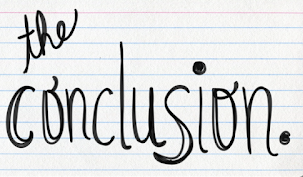
A conclusion is a very important part of your research paper. This is because you, as the author of your paper, are wrapping up everything you have discussed in your paper.
Basically, the length of the conclusion is determined by your paper’s length.
The longer the paper, the longer the conclusion, and the shorter it is, the shorter the conclusion. A conclusion should not be below 3 sentences. It will take a few hours to write all these components of your paper.
Even though this is the case, an effective conclusion should have the following characteristics.
Characteristics of a Good Term Paper Conclusion
- Restatement of the topic of your research
- Restatement of your thesis. This statement should not be identical to what you wrote in the introduction.
- Provide a summary of your main points. Do not provide any new information.
- You can also add up the points to further explain the significance of your points.
- Make a call to action if it is appropriate or significant to your paper.
- Respond to the “so what” question. This requires you to explain the context of your paper and why it matters to the readers.
From this, it is evident that the conclusion is very important in your research paper. You may not include all of the above, but it is important to restate your paper’s topic, thesis, and main points. Check our research paper writing guide to learn more about how to write these parts.
How Long should the Reference Page be?
The reference page length completely depends on the number of sources you have used in your paper. Your paper may be lengthy with few sources, while others can be shorter with more.
A good term paper should have a reference page listing all your information sources. Provided that you list the sources in the right referencing format, like APA and MLA , the length of the reference page is not definitive.
Let your paper be written by a Team
A team avoids plagiarism and has checks and balances to guarantee a quality and ORIGINAL paper
Frequently Asked Questions
How long should a term paper be for high school.
Most teachers in high schools require their students to submit 3 to 5-page research papers. Those are the normal research papers assigned within the semester. However, final research papers like the English 102 papers are between 5 and 7 pages.
What is the optimal graduate paper length?
Even though the topic of the graduate paper determines its length, such papers are considerably longer. This is because they tackle complex topics requiring in-depth explanations, citations, examples, etc. They can be between 7 and 15 pages. They can also exceed the count.
How long should a term paper be for middle school?
The research papers written by students in middle school are considerably shorter than those given to college or graduate school students. The normal papers written within the semester are between 1 and 2 pages, while the final papers are between 2 and 4.
How long should a literature review be for a research paper?
The length of a literature review depends on the purpose and the audience of the term paper. In most of the research papers in college, the literature review should not exceed two pages. For longer papers of more than 10 pages, it can be between 2 and 3 pages.
How to write a term paper fast
To write a research paper fast, begin by selecting a topic. This is followed by researching the topic and working on a thesis. Write the structure of your paper by creating an outline.
Follow the outline and write the paper by beginning with an introduction and ending with a conclusion. Finally, proofread your paper to correct errors. Read our checklist on how to revise your paper to a final copy.
What are the most common types of research paper formats
You must select a specific style when formatting a research or term paper. The most common formats for research papers are MLA, APA, Chicago, and Harvard.
Each format dictates the style of the paper, the spacing, the in-text citation style, and the reference page style. You can get all these done if you get someone to write your homework at a very reasonable cost.
What is the average length of an academic journal article
Most academic journal articles span 20 to 25 pages when they have a one-and-half line spacing. If the academic journals are double-spaced, they can be between 25 and 30 pages. The journal’s word count ranges from 4000 to 7000 words.

With over 10 years in academia and academic assistance, Alicia Smart is the epitome of excellence in the writing industry. She is our managing editor and is in charge of the writing operations at Grade Bees.
Related posts
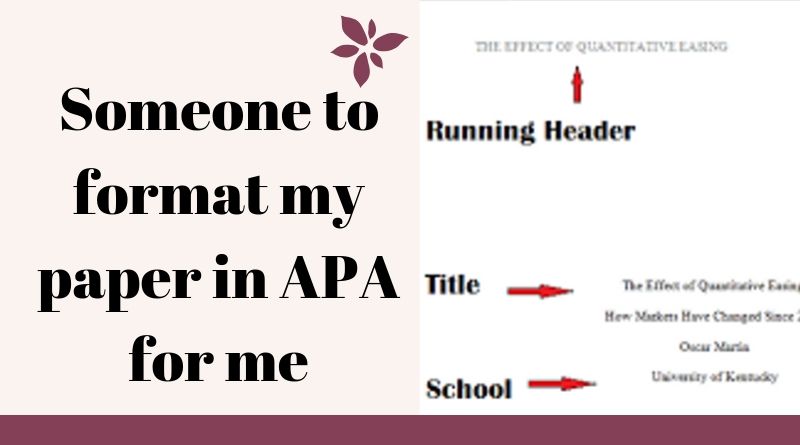
Someone to format my paper in APA for me
How to Write and Cite Sources in APA and MLA for Term Papers

Background Information in an Essay
Background Information in an Essay: How to Write and Example
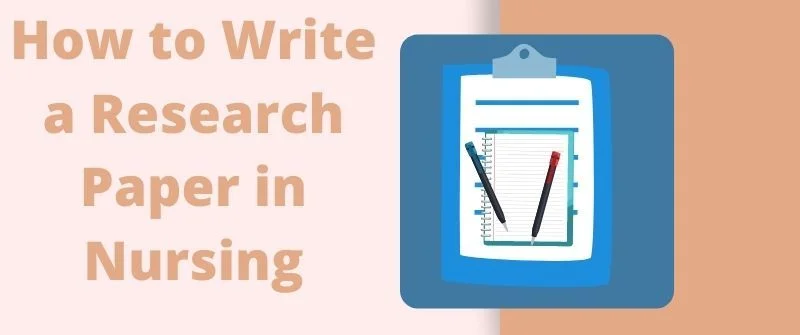
writing Nursing Research Paper
How to Write a Nursing Term Paper or Nursing Research Paper

researchersnetwork.org
PRACTICAL GUIDES TO RESEARCH WRITING

How Long Is a Research Paper? Let’s Find Out
The length of your paper ranks high among various factors to consider in academic writing. It is thus common for students to get confused when they are presented with a research paper that does not prescribe a word limit.
How long is a research paper? This article will analyse various factors you should consider to determine the length of your paper.
How long should a research paper be?
The average length of a paper ranges between 4000 to 6000 words. However, research papers may carry up to ten thousand words depending on their complexity. A complex research topic brings about multiple issues to be studied and longer arguments in a bid to acknowledge existing work in your field.
As such, your research paper length is also affected by the availability of resources. A wider number of counterarguments presents more arguments for your paper, resulting in a longer document. The documents may also add to your literature review chapter, further lengthening your paper.
How many pages is a research paper
On average, a research paper ranges between 15 to 50 pages. As indicated earlier, the length of your paper is affected by the complexity of your topic. As such, some disciplines may require a longer document while shorter papers suffice in other disciplines.
When going about your research paper, we recommend that you start off with research and then you develop an outline. Afterward, share the outline with your committee for input on areas you may address further and the arguments to omit.
This will help you gauge the length of your paper, without stuffing your research paper with filler words. Also, check previous tasks in your faculty to determine the word count range of previous papers within your field.
Why are research papers so long?
The research paper length ranks on the higher end of the spectrum for academic papers. This is because your research paper comprises multiple chapters that require evidence-backed arguments.
The literature review, for instance, puts into consideration various publications relating to your topic. This allows you to highlight a research gap and argue the necessity of researching the identified gap.
This is followed by an introduction where you highlight the background study of your topic and your thesis. Your methodology further analyses more resources in a bid to legitimize your research and enable the replicability of your research.
Afterward, your paper presents your results and supplements other studies to design your arguments. This tedious approach to argument brings about copious amounts of words, thus making a research paper longer than typical essays.
Average research paper length: how long should each chapter be?
The length of your dissertation chapters varies depending on your total word count. A longer paper may have more words in each chapter compared to shorter research papers. A great way to divide the word count among various chapters in your paper is to follow the percentages approach.
The abstract of your paper should range between 300-500 words. As such, use precise sentences to capture all essential bits of information needed for a quality abstract. The other portions of your paper should contribute to the total wordcount as follows:
- Literature review – 25% to 30%
- Introduction – 15%-20%
- Methodology – 10%-25%
- Results – 10%-15%
- Discussion – 25%-30%
- Conclusion – 10%-15%
You can use the outline to approximate the length of your paper and thus determine how long various chapters should be. We however recommend that you focus on the quality and completeness of arguments in your paper as opposed to chasing a word limit.
What contributes to the final word count of a paper?
After establishing the answer to the question: how long should a thesis be? Most students usually work to include every word from the title page to the appendix in this word count.
If a word limit has been provided by your tutor, it covers all sections of the paper except the title page, references, and appendices. As such, your word count is estimated by the number of words in various chapters that are formative to your research.
We hope that this guide has cleared any issues you were facing regarding your research paper length. Feel free to engage our experts for assistance in editing your paper to ensure success in your academic journey. The experienced writers ensure that your paper captures the imagination of the reader. If you’re also seeking assistance with other assignments, you can rely on them to deliver exceptional results. If you are wondering “Can they do my python homework ?” we assure you, “Yes, they can.”

How Long Should a Research Paper Be? A Short Read.
Featured In
Table of contents, what is a research paper, determining the length of each part, normal length of a research paper, page numbering and paper components, why are research papers so lengthy, top tools for research paper writing, frequently asked questions (faq).
Have you ever wondered, “how long should a research paper be?” As most people would. The length of a research paper can vary depending on numerous factors....
Have you ever wondered, “how long should a research paper be?” As most people would. The length of a research paper can vary depending on numerous factors. Let’s dive into the heart of academic writing and unravel the mystery.
A research paper is an in-depth exploration of a specific topic based on original research. It requires a structured approach and is different from a term paper or a review article. With its foundation on a strong thesis statement, a research paper defends or challenges a particular standpoint using evidence from research.
- Title Page : Usually a single page, containing the research topic, your name, and other relevant details.
- Research Paper Introduction : About 10% of the total word count, introducing your research question and setting the stage.
- Literature Review : Varies widely but is essential to summarize existing research related to your topic.
- Methods Section : Explains your research methodology, generally 10-15% of the length of the paper.
- Results Section : Presents your findings. Its length can vary based on the complexity of the data.
- Discussion Section : Often combined with results, it interprets and explores the significance of your findings.
- References Section : Lists all in-text citations and other sources. Its length is contingent on the number of sources used.
While the length can vary based on academic level and subject, most high school assignments range from 5-20 pages, whereas longer papers are common in higher academia. Always refer to the specific guidelines provided by instructors or journal article submissions.
Research papers must be structured. The total number of pages depends on factors like spacing, font size, and word choice. APA and MLA are common citation styles that have distinct formatting requirements.
Research papers require an exhaustive exploration of a topic. From the literature review to the discussion section, each component has a purpose. Papers are long to ensure all main points, supporting evidence, and methodologies are thoroughly covered.
- Speechify Text to Speech
- Cost : Varies based on subscription.
- Description : Perfect for those who appreciate an auditory approach to revising and proofreading, Speechify converts your research paper into speech. Ideal for getting a fresh perspective and catching filler words or awkward phrasings.
- Top 5 Features : Text-to-speech conversion, adjustable voice and speed settings, offline access, multi-device synchronization, PDF compatibility.
- Cost : Free basic version; Premium starts at $11.66/month.
- Description : Grammarly is a writer's best friend, ensuring flawless English and optimal word choice. It proofreads your research paper, provides in-depth suggestions, and even checks for plagiarism.
- Top 5 Features : Advanced grammar check, plagiarism detector, tone suggestions, word choice recommendations, and clarity and engagement scores.
- Cost : Free.
- Description : An essential tool for academic writing, Zotero simplifies the citation process, helping users collect, organize, and cite their sources. It supports multiple citation styles, including APA, MLA, and more.
- Top 5 Features : Source organization, automatic in-text citations, bibliography and references section creation, integration with word processors, and online syncing.
- Cost : Starts at $249.95 (students get discounts).
- Description : Tailored for longer papers and academic research, EndNote provides tools to search, organize, and share research. It's particularly useful for creating a paper outline, managing references for journal articles, and maintaining a coherent thesis statement.
- Top 5 Features : Extensive reference library, manuscript matcher, PDF annotations, collaboration tools, and Microsoft Word integration.
- Cost : Free basic version; Premium at $7.99/month.
- Description : Ideal for the brainstorm phase of the writing process, Evernote lets you capture notes, articles, and images on any device, helping to keep your original research and main points organized.
- Top 5 Features : Note-taking, web clipper, templates, search handwriting feature, and document scanning.
- Description : A blend of a social network and a reference manager, Mendeley helps academics and students collaborate, share findings, and keep track of the latest research articles in the humanities and other fields.
- Top 5 Features : Annotated PDFs, academic social network, reference manager, citation plugin, and job and conference recommendations.
- Cost : $49 for standard license.
- Description : Perfect for drafting, Scrivener aids in the paper writing journey, allowing for easy reorganization, tracking changes, and breaking the research paper into manageable sections like the methods section, results and discussion, and research paper introduction.
- Top 5 Features : Corkboard outlining, full-screen writing mode, document snapshots, compiling and exporting, and customizable templates.
- Cost : Pricing varies based on institution's agreement.
- Description : A staple in academia, Turnitin ensures the authenticity of your academic paper. It checks for similarity against a massive database, ensuring your work is plagiarism-free and based on in-depth original research.
- Top 5 Features : Plagiarism checking, grading tools, peer review assignments, feedback studio, and paper database.
- MindMeister
- Cost : Free basic plan; Personal plan at $4.99/month.
- Description : Visual thinkers will appreciate MindMeister. Before even embarking on your first draft, this tool allows you to create mind maps to visualize and structure your research topic, ensuring no main points or supporting evidence are missed.
- Top 5 Features : Mind mapping, task management, presentation mode, customizable designs, and real-time collaboration.
Each tool brings a unique touch to the research paper journey, from the first brainstorm to the final proofread. Ensure your paper stands out in terms of content, structure, and authenticity with these powerful aids.
- What are some of the longest research papers?
- Research papers will depend on the field and academic level. However, dissertations and theses from Ph.D. candidates can extend to several hundred pages.
- How many pages should a research paper be?
- The number varies depending on the academic level and subject but generally ranges from 5 pages in high school to upwards of 30 pages in higher academia.
- How long should a research paper take?
- It depends on the research topic, depth, and prior knowledge. Weeks to months is common.
- How long should a 15-page research paper take?
- A thorough 15-page research paper can take several weeks, factoring in research, drafting, revising, and proofreading.
- How long does it take to write a 20-page research paper?
- Approximately a month or more, depending on the depth and complexity of the topic.
- How many pages does a research paper need to be?
- It depends on the assignment guidelines and academic level. Always adhere to provided specifications.
AI Maker: Everything you need to know!
Everything to Know About Google Cloud Text to Speech API

Cliff Weitzman
Cliff Weitzman is a dyslexia advocate and the CEO and founder of Speechify, the #1 text-to-speech app in the world, totaling over 100,000 5-star reviews and ranking first place in the App Store for the News & Magazines category. In 2017, Weitzman was named to the Forbes 30 under 30 list for his work making the internet more accessible to people with learning disabilities. Cliff Weitzman has been featured in EdSurge, Inc., PC Mag, Entrepreneur, Mashable, among other leading outlets.

- How Long Is a PhD Thesis?
- Doing a PhD
It’s no secret that one of the most challenging aspects of a PhD degree is the volume of work that goes into writing your thesis . So this raises the question, exactly how long is a thesis?
Unfortunately, there’s no one size fits all answer to this question. However, from the analysis of over 100 PhD theses, the average thesis length is between 80,000 and 100,000 words. A further analysis of 1000 PhD thesis shows the average number of pages to be 204 . In reality, the actual word count for each PhD thesis will depend on the specific subject and the university it is being hosted by. This is because universities set their own word length requirements, with most found to be opting for around 100,000.
To find out more about how these word limits differ between universities, how the average word count from STEM thesis differ from non-STEM thesis and a more detailed breakdown from the analysis of over 1000 PhDs, carry on reading the below.
Word Count Differences Between Universities
For any PhD student writing a thesis, they will find that their document will be subject to a word limit set by their university. In nearly all cases, the limit only concerns the maximum number of words and doesn’t place any restrictions on the minimum word limit. The reason for this is that the student will be expected to write their thesis with the aim of clearly explaining their research, and so it is up to the student to determine what he deems appropriate.
Saying this, it is well accepted amongst PhD students and supervisors that the absence of a lower limit doesn’t suggest that a thesis can be ‘light’. Your thesis will focus on several years worth of original research and explore new ideas, theories or concepts. Besides this, your thesis will need to cover a wide range of topics such as your literature review, research methodology, results and conclusion. Therefore, your examiners will expect the length of your thesis to be proportional to convey all this information to a sufficient level.
Selecting a handful of universities at random, they state the following thesis word limits on their website:
- University of Edinburgh: 100,000
- University of Exeter: 100,000
- University of Leister: 80,000
- University of Bath: 80,000
- University of Warwick: 70,000
The above universities set upper word limits that apply across the board, however, some universities, such as the University of Birmingham and the University of Sheffield, set different word limits for different departments. For example, the University of Sheffield adopts these limits:
- Arts & Humanities: 75,000
- Medicine, Dentistry & Health: 75,000
- Science: 80,000
- Social Sciences: 75,000-100,000
Although there’s a range of limit, it’s safe to say that the majority fall within the 80,000 to 100,000 bracket.
Word Count Based on Data from past Theses
A poll of 149 postdocs.
In mid-2019, Dr Eva Lantsoght, a published author, academic blogger and Structural Engineering Professor, conducted a poll which asked postgraduate doctoral students to share the length of their final thesis. 149 PostDoc students responded to the survey, with the majority reporting a length falling within the ‘80,000 – 120,000 words’ bracket as seen below.
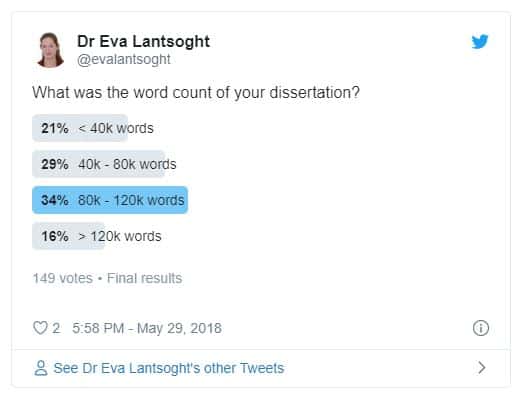
Analysis of 1000 PhD Theses
Over a three-year time period, Dr Ian Brailsford, a then Postgraduate Learning Adviser at the University of Auckland, analysed 1000 doctoral thesis submitted to his university’s library. The PhD theses which formed the basis of his analysis were produced between 2008 to 2017 and showed:
- Average number of pages = 204
- Median number of pages = 198
- Average number of chapters = 7.6
We should note that the above metrics only cover the content falling within the main body of the thesis. This includes the introduction, literature review, methods section, results chapter, discussions and conclusions. All other sections, such as the title page, abstract, table of contents, acknowledgements, bibliography and appendices were omitted from the count.
Although it’s impossible to draw the exact word count from the number of pages alone, by using the universities recommended format of 12pt Times New Roman and 1.5 lines spacing, and assuming 10% of the main body are figures and footnotes, this equates to an average main body of 52,000 words.
STEM vs Non-STEM
As part of Dr Ian Brailsford’s analysis, he also compared the length of STEM doctorate theses to non-STEM theses. He found that STEM theses tended to be shorter. In fact, he found STEM theses to have a medium page length of 159 whilst non-STEM theses had a medium of around 223 pages. This is a 40% increase in average length!
Can You Exceed the Word Count?
Whilst most universities will allow you to go over the word count if you need to, it comes with the caveat that you must have a very strong reason for needing to do so. Besides this, your supervisor will also need to support your request. This is to acknowledge that they have reviewed your situation and agree that exceeding the word limit will be absolutely necessary to avoid detriment unnecessary detriment to your work.
This means that whilst it is possible to submit a thesis over 100,000 words or more, it’s unlikely that your research project will need to.
How Does This Compare to a Masters Dissertation?
The average Masters dissertation length is approximately 20,000 words whilst a thesis is 4 to 5 times this length at approximately 80,000 – 100,000.
The key reason for this difference is because of the level of knowledge they convey. A Master’s dissertation focuses on concluding from existing knowledge whilst a PhD thesis focuses on drawing a conclusion from new knowledge. As a result, the thesis is significantly longer as the new knowledge needs to be well documented so it can be verified, disseminated and used to shape future research.
Finding a PhD has never been this easy – search for a PhD by keyword, location or academic area of interest.
Related Reading
Unfortunately, the completion of your thesis doesn’t mark the end of your degree just yet. Once you submit your thesis, it’s time to start preparing for your viva – the all-to-fun thesis defence interview! To help you prepare for this, we’ve produced a helpful guide which you can read here: The Complete Guide to PhD Vivas.
Browse PhDs Now
Join thousands of students.
Join thousands of other students and stay up to date with the latest PhD programmes, funding opportunities and advice.
- Sidebar Menu
- Speech Samples
- Letter Samples
- Essays Samples
- Grammar Tips
- Funny Anecdotes
- Profound Anecdotes
- Press release Samples
- Recommendation Samples
- Wedding vows Samples
- Article Samples
- Bibliography Samples
- Condolence Samples
- Eulogy Speech
How long should an essay or research paper be?
These tips on how long an essay, research paper or writing assignment will help you make good grades and take your papers and essays from just ok to an A+ paper. Keep reading to finds some tips on essay writing such as how long an essay should be and how to make your essay longer or how make a research paper shorter.
How do you know how long an essay should be?
Many times an instructor will tell you how long an essay or a research paper should be or give you a page number range, such as saying the paper should be between 5-7 pages. If you don't have a page range, the length of your essay can depend on a lot of things. When in doubt, ask for guidance. If you can't get help, you'll have to guess.
During an essay test, usually one or two paragraphs will answer short essay questions.
For big essay tests, where there is only 1 question for a whole hour-long test, you will be expected to compose an entire essay. In that case, write 5 paragraphs including all the parts of a composition of between 1-2 written pages.
For high school papers , usually teachers want normal essays or research papers to be between 3-5 pages, and they expect more like 5-7 pages for final papers. In middle school or junior high school , normal papers will probably be 1-2 pages in length and final paper 2-4. Naturally, you should go by what your teacher tells you and only use this as a guide if you don't have more information.
In college , it depends on what level the class is and the level of importance of an assignment. Early in the semester or to review reading assignments, you will only have to write maybe 1-3 pages, or 5-7 for more important tasks.
For an final paper in an intro or 100-level college class, professors don't usually ask for more than 10-12 pages. For a final research paper at a 300-400 level or upper level course, you can be expected to produce papers of 15-20 pages. Naturally, this depends on the university you're attending, the professors' preferences and your field of study. Math majors will not have to write long papers. History majors will write lots of lengthy papers.
How long is each part of an essay?
If you are wondering how long each part of an essay (the introduction, the body and the conclusion) should be, here are some ideas of how to balance the length. The overall length of an essay will often depends on how big the topic is.
The list below will give you a rough idea, but the main point is that each part should be in proportion to the other parts. As an essay gets longer, the body should become longer than the corresponding introduction. The below outlines can give you a rough idea. Most teachers will not fault you for going too long, but they will dock your grade for writing too short of an essay, so err on the side of too long if you have to go one way.
How long should each section of a paper be?
For a 1 page essay or to write an answer to a long essay test , make each section one paragraph. 1. Introduction with thesis statement, 1 paragraph 2. Body point A, 1 paragraph 3. Body point B, 1 paragraph 4. Body point C, 1 paragraph 5. Conclusion, 1 paragraph For a 5 page essay: 1. Introduction, about 3/4 to 1 page 2. Body point A, about 1 page 3. Body point B, about 1 page 4. Body point C, about 1 page 5. Conclusion, about 3/4 to 1 page For a 10 page paper: 1. Introduction, about 1 page or 1 and a 1/2 pages 2. Body point A, about 2 and a 1/2 pages 3. Body point B, about 2 and a 1/2 pages 4. Body point C, about 2 and a 1/2 pages 5. Conclusion, 1 page or 1 and a 1/2 pages For a 15 page paper: 1. Introduction, about 1 and a 1/2 or 2 pages 2. Body point A, about 4 pages 3. Body point B, about 4 pages 4. Body point C, about 4 pages 5. Conclusion, about 1 and a 1/2 or 2 pages
More information : We hope this page was helpful and provided you with some information about how long an essay or research paper should be . Check out our main page for more articles here Can U Write .
All materials on this page are under the copyright of canuwrite.com These speech and letter sample materials may be re-used for free but may not be reprinted or redistributed without attribution to canuwrite.com

An official website of the United States government
Here’s how you know
Official websites use .gov A .gov website belongs to an official government organization in the United States.
Secure .gov websites use HTTPS A lock ( Lock Locked padlock icon ) or https:// means you’ve safely connected to the .gov website. Share sensitive information only on official, secure websites.

Diana Dou, Ph.D. Postdoctoral Scholar at Stanford University NIAMS K99/R00 Fellow
Early-stage investigators often start their careers with dreams of contributing to a groundbreaking research discovery. It often can take decades to achieve a scientific breakthrough that changes our understanding of human disease. For NIAMS grantee Dr. Diana Dou of Stanford University, uncovering clues to a long-standing mystery about autoimmune diseases happened sooner in her career than expected.
Dou holds a NIAMS K99 grant, which is a research career award uniquely designed to facilitate the transition of outstanding postdoctoral candidates from mentored to independent research positions. She is the first author on a paper that offers new insight as to why most people with autoimmune diseases are women . In a new video series, Dr. Dou discusses her career path, the importance of NIH funding for cutting-edge research, and the research findings that could change our approach to diagnosing and treating autoimmune diseases.
.twitter-f svg{fill:#ffffff;} About NIAMS Clinical Trials Grants & Funding Health Topics Labs @ NIAMS News Room NIAMS Multimedia Library Disclaimer FOIA Contact us Privacy Statement Accessibility HHS Vulnerability Disclosure Social Media Moderation Policy NIAMS Archives Subscribe to Our E-Newsletters Click the button to see different options to sign up for newsletters.
Free Paraphrasing Tool
Industry-leading ai paraphrase tool, ensure accuracy, speed up your work, prioritize readability, use with all kinds of content, enjoy for free, what is paraphrasing.

How to Use Grammarly’s Online Paraphrasing Tool
Who can use grammarly’s ai paraphrasing tool.

Professionals

Researchers

Journalists

Copywriters

Frequently Asked Questions
Are paraphrasing, rewording, and rephrasing the same thing, what is an example of a paraphrase, what are the steps of paraphrasing, how is paraphrasing different from plagiarizing, is using a paraphrasing tool considered cheating, why are citations an important element of paraphrasing, how do you cite a paraphrase in apa, mla, and chicago-style formats, learn how to paraphrase, works where you do, more ai writing assistance from grammarly, ensure your grammar is great, avoid accidental plagiarism, cite in seconds, summarize with ease, perfect your sentences, write—and rewrite—with ease.
By signing up, you agree to the Terms and Conditions and Privacy Policy . California residents, see our CA Privacy Notice .
Advertisement
Supported by
U.S. Tightens Rules on Risky Virus Research
A long-awaited new policy broadens the type of regulated viruses, bacteria, fungi and toxins, including those that could threaten crops and livestock.
- Share full article

By Carl Zimmer and Benjamin Mueller
The White House has unveiled tighter rules for research on potentially dangerous microbes and toxins, in an effort to stave off laboratory accidents that could unleash a pandemic.
The new policy, published Monday evening, arrives after years of deliberations by an expert panel and a charged public debate over whether Covid arose from an animal market or a laboratory in China.
A number of researchers worried that the government had been too lax about lab safety in the past, with some even calling for the creation of an independent agency to make decisions about risky experiments that could allow viruses, bacteria or fungi to spread quickly between people or become more deadly. But others warned against creating restrictive rules that would stifle valuable research without making people safer.
The debate grew sharper during the pandemic, as politicians raised questions about the origin of Covid. Those who suggested it came from a lab raised concerns about studies that tweaked pathogens to make them more dangerous — sometimes known as “gain of function” research.
The new policy, which applies to research funded by the federal government, strengthens the government’s oversight by replacing a short list of dangerous pathogens with broad categories into which more pathogens might fall. The policy pays attention not only to human pathogens, but also those that could threaten crops and livestock. And it provides more details about the kinds of experiments that would draw the attention of government regulators.
The rules will take effect in a year, giving government agencies and departments time to update their guidance to meet the new requirements.
“It’s a big and important step forward,” said Dr. Tom Inglesby, the director of the Johns Hopkins Center for Health Security and a longtime proponent of stricter safety regulations. “I think this policy is what any reasonable member of the public would expect is in place in terms of oversight of the world’s most transmissible and lethal organisms.”
Still, the policy does not embrace the most aggressive proposals made by lab safety proponents, such as creating an independent regulatory agency. It also makes exemptions for certain types of research, including disease surveillance and vaccine development. And some parts of the policy are recommendations rather than government-enforced requirements.
“It’s a moderate shift in policy, with a number of more significant signals about how the White House expects the issue to be treated moving forward,” said Nicholas Evans, an ethicist at University of Massachusetts Lowell.
Experts have been waiting for the policy for more than a year. Still, some said they were surprised that it came out at such a politically fraught moment . “I wasn’t expecting anything, especially in an election year,” Dr. Evans said. “I’m pleasantly surprised.”
Under the new policy, scientists who want to carry out experiments will need to run their proposals past their universities or research institutions, which will to determine if the work poses a risk. Potentially dangerous proposals will then be reviewed by government agencies. The most scrutiny will go to experiments that could result in the most dangerous outcomes, such as those tweaking pathogens that could start a pandemic.
In a guidance document , the White House provided examples of research that would be expected to come under such scrutiny. In one case, they envisioned scientists trying to understand the evolutionary steps a pathogen needed to transmit more easily between humans. The researchers might try to produce a transmissible strain to study, for example, by repeatedly infecting human cells in petri dishes, allowing the pathogens to evolve more efficient ways to enter the cells.
Scientists who do not follow the new policy could become ineligible for federal funding for their work. Their entire institution may have its support for life science research cut off as well.
One of the weaknesses of existing policies is that they only apply to funding given out by the federal government. But for years , the National Institutes of Health and other government agencies have struggled with stagnant funding, leading some researchers to turn instead to private sources. In recent years, for example, crypto titans have poured money into pandemic prevention research.
The new policy does not give the government direct regulation of privately funded research. But it does say that research institutions that receive any federal money for life-science research should apply a similar oversight to scientists doing research with support from outside the government.
“This effectively limits them, as the N.I.H. does a lot of work everywhere in the world,” Dr. Evans said.
The new policy takes into account the advances in biotechnology that could lead to new risks. When pathogens become extinct, for example, they can be resurrected by recreating their genomes. Research on extinct pathogens will draw the highest levels of scrutiny.
Dr. Evans also noted that the new rules emphasize the risk that lab research can have on plants and animals. In the 20th century, the United States and Russia both carried out extensive research on crop-destroying pathogens such as wheat-killing fungi as part of their biological weapons programs. “It’s significant as a signal the White House is sending,” Dr. Evans said.
Marc Lipsitch, an epidemiologist at Harvard and a longtime critic of the government’s policy, gave the new one a grade of A minus. “I think it’s a lot clearer and more specific in many ways than the old guidance,” he said. But he was disappointed that the government will not provide detailed information to the public about the risky research it evaluates. “The transparency is far from transparent,” he said.
Scientists who have warned of the dangers of impeding useful virus research were also largely optimistic about the new rules.
Gigi Gronvall, a biosafety specialist at the Johns Hopkins Bloomberg School of Public Health, said the policy’s success would depend on how federal health officials interpreted it, but applauded the way it recognized the value of research needed during a crisis, such as the current bird flu outbreak .
“I was cautiously optimistic in reading through it,” she said of the policy. “It seems like the orientation is for it to be thoughtfully implemented so it doesn’t have a chilling effect on needed research.”
Anice Lowen, an influenza virologist at Emory University, said the expanded scope of the new policy was “reasonable.” She said, for instance, that the decision not to create an entirely new review body helped to alleviate concerns about how unwieldy the process might become.
Still, she said, ambiguities in the instructions for assessing risks in certain experiments made it difficult to know how different university and health officials would police them.
“I think there will be more reviews carried out, and more research will be slowed down because of it,” she said.
Carl Zimmer covers news about science for The Times and writes the Origins column . More about Carl Zimmer
Benjamin Mueller reports on health and medicine. He was previously a U.K. correspondent in London and a police reporter in New York. More about Benjamin Mueller

IMAGES
VIDEO
COMMENTS
1- The median length of a research paper is 4,133 words (equivalent to 166 sentences or 34 paragraphs), excluding the abstract and references, with 90% of papers being between 2,023 and 8,284 words. 2- A typical article is divided in the following way: Introduction section: 14.6% of the total word count.
The ideal length of a research paper should be up to 8000 words. That means without the references and abstract sections, and you should have over 150 sentences and 30 paragraphs. Although there are no hard and fast rules for choosing the length of individual paragraphs in a research paper, the most common length is between 90 and 130 words.
When it comes to length - while varying based on assignment type - general guidelines recommend that undergraduate research papers range from 3-7 pages in length while graduate-level assignments usually require 10+ page lengths. 6. Considerations when Setting an Ideal length for your Specific Topic and Audience.
An Overview. . In short, research paper's average length can range from 1,500 words for research proposals and case studies - all the way to 100,000 words for large dissertations. Research, by its nature of being complex, requires a careful and thorough elucidation of facts, notions, information, and the like - which is all reflected in its ...
In general, academic articles are between 4,000 and 7,000 words long. However, there is a lot of variability depending on the discipline, article type, and journal. For example, medicine and science articles tend to be shorter than social science and humanities articles. Original research articles tend to be shorter than Review articles.
Typically, research papers run around 4,000-6,000 words, but it's common to see short papers around 2,000 words or long papers over 10,000 words. If you're writing a paper for school, the recommended length should be provided in the assignment.
II. Factors Affecting Research Paper Length. The length of a research paper is highly dependent on the type of research conducted, as well as its complexity. In general, most academic papers should be between 5 to 10 pages long, depending on certain factors. Factors Affecting Research Paper Length:
The average length of a research paper, excluding the abstract and references, is 4,133 words (equivalent to 166 sentences or 34 paragraphs), with 90% of papers falling between 2,023 and 8,284 words. A typical article is structured as follows: The introduction section accounts for 14.6% of the total word count.
For instance, I recently read a paper that reported, all within the space of a single Results section about 2000 words long, (a) a genetic association analysis; (b) replications of the association analysis on five independent samples (c) a study of methylation patterns; (d) a gene expression study in mice; and (e) a gene expression study in ...
Research that has a thesis statement only requires 2 to 3 arguments to be proved and will be summed up in 500 to 700 words. After providing the introduction and a little background on the research, you can directly shift to mentioning the arguments and claims so you may prove the statement and complete the research.
Frustration and backtracking are a normal part of the process. However, reference librarians can show you strategies that can save you time and can help you do your research more effectively. Ask at the Help Desk, through Ask-us (chat), text to 479-385-0803 or email [email protected] for assistance.
The word count for a research paper depends on several factors, such as academic level, field of study, and specific guidelines. However, research papers commonly range from 2,500 to 10,000 words. Top 9 Tools Needed to Write Long Research Papers Speechify Text to Speech. Cost: Free to try
4. If you're trying to get a paper that you can publish in a journal, then it really depends on the journal, and if it has any specific requirements or constraints. There is no "standard" length for a paper. I've had papers that were 15 manuscript pages, and papers that were 50. Share. Improve this answer. Follow. answered Sep 14, 2017 at 19:52.
Set the top, bottom, and side margins of your paper at 1 inch. Use double-spaced text throughout your paper. Use a standard font, such as Times New Roman or Arial, in a legible size (10- to 12-point). Use continuous pagination throughout the paper, including the title page and the references section.
Essay length guidelines. Type of essay. Average word count range. Essay content. High school essay. 300-1000 words. In high school you are often asked to write a 5-paragraph essay, composed of an introduction, three body paragraphs, and a conclusion. College admission essay. 200-650 words.
Generally, the length of a research paper is determined by its type. A survey-based or theoretical paper can be up to 10 pages long while an experimental study may take 20 or more pages to explain. When it comes to reading, people tend to read faster with shorter documents due to less content requiring comprehension.
For a typical 5-page research paper, your introduction should not exceed half a page. However, if you are writing a long essay of 15 pages or more, the introduction may span to a page or several paragraphs. Since most of the research papers given to undergraduate college students are not lengthy, the introduction should not exceed a page.
How long is a research paper? This article will analyse various factors you should consider to determine the length of your paper. How long should a research paper be? The average length of a paper ranges between 4000 to 6000 words. However, research papers may carry up to ten thousand words depending on their complexity. A complex research ...
How long is a dissertation? Dissertation word counts vary widely across different fields, institutions, and levels of education: An undergraduate dissertation is typically 8,000-15,000 words. A master's dissertation is typically 12,000-50,000 words. A PhD thesis is typically book-length: 70,000-100,000 words.
Normal Length of a Research Paper. While the length can vary based on academic level and subject, most high school assignments range from 5-20 pages, whereas longer papers are common in higher academia. Always refer to the specific guidelines provided by instructors or journal article submissions.
Unfortunately, there's no one size fits all answer to this question. However, from the analysis of over 100 PhD theses, the average thesis length is between 80,000 and 100,000 words. A further analysis of 1000 PhD thesis shows the average number of pages to be 204. In reality, the actual word count for each PhD thesis will depend on the ...
For high school papers, usually teachers want normal essays or research papers to be between 3-5 pages, and they expect more like 5-7 pages for final papers. In middle school or junior high school, normal papers will probably be 1-2 pages in length and final paper 2-4. Naturally, you should go by what your teacher tells you and only use this as ...
How long should an abstract be for a research paper? The length of an abstract for a research paper typically ranges from 150 to 250 words. This short length summarizes the research's main aspects clearly and briefly. Sticking within this word range is important to maintain clarity and brevity so that readers can quickly grasp the important ...
The 2024 AP Exams will be administered in schools over two weeks in May: May 6-10 and May 13-17. AP coordinators are responsible for notifying students when and where to report for the exams.
Dou holds a NIAMS K99 grant, which is a research career award uniquely designed to facilitate the transition of outstanding postdoctoral candidates from mentored to independent research positions. She is the first author on a paper that offers new insight as to why most people with autoimmune diseases are women.In a new video series, Dr. Dou discusses her career path, the importance of NIH ...
The easiest, quickest way to create a paraphrase is to use a free paraphrase generator like the one at the top of this page. To use this paraphrasing tool, paste in your source text, then click the "Paraphrase it" button.If you'd like to write a paraphrase from scratch, first read the original text closely.
Research on extinct pathogens will draw the highest levels of scrutiny. Dr. Evans also noted that the new rules emphasize the risk that lab research can have on plants and animals.